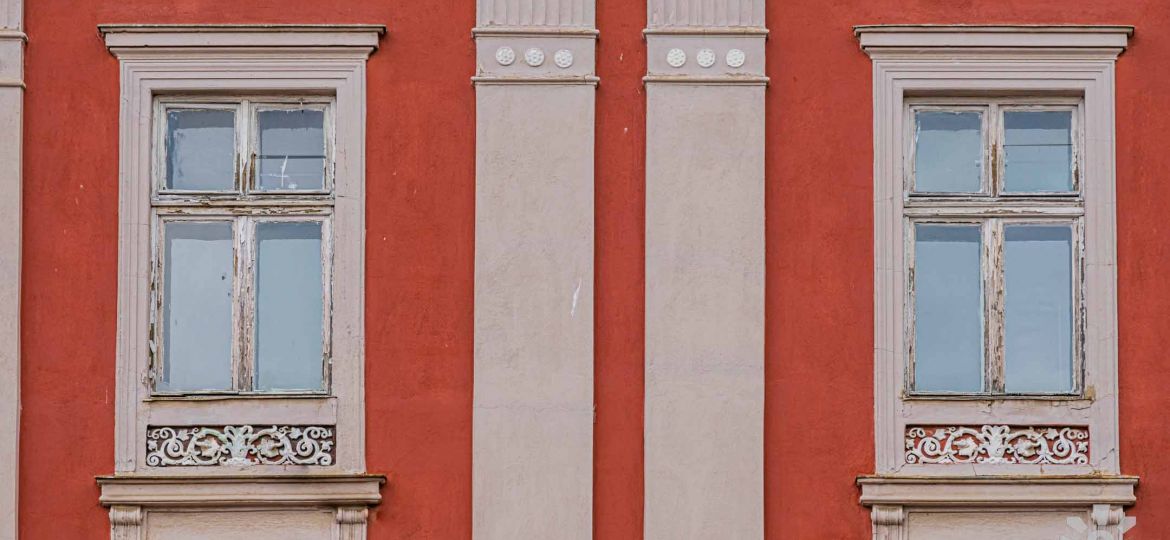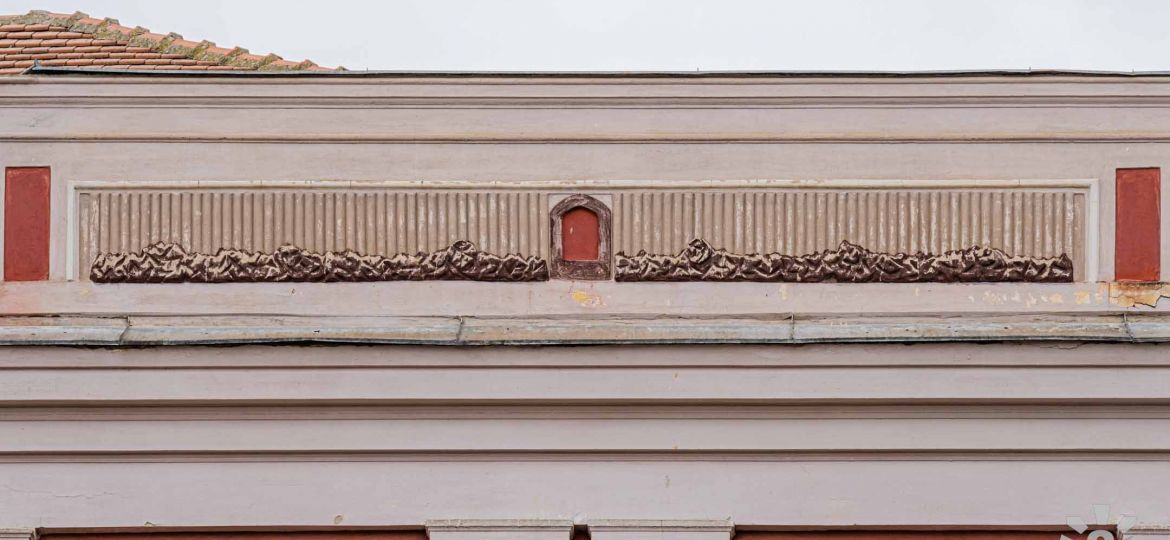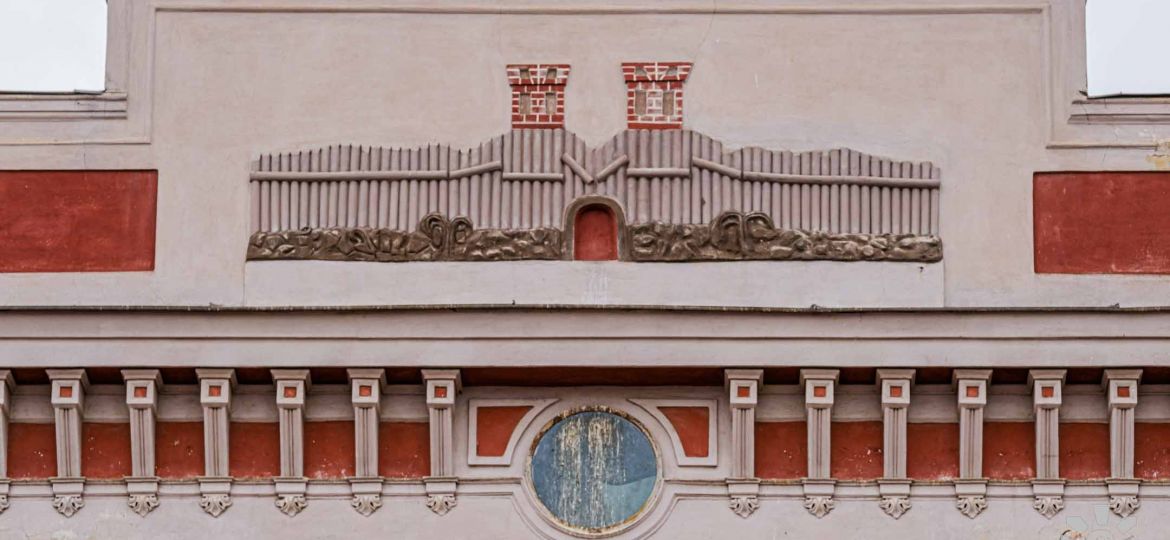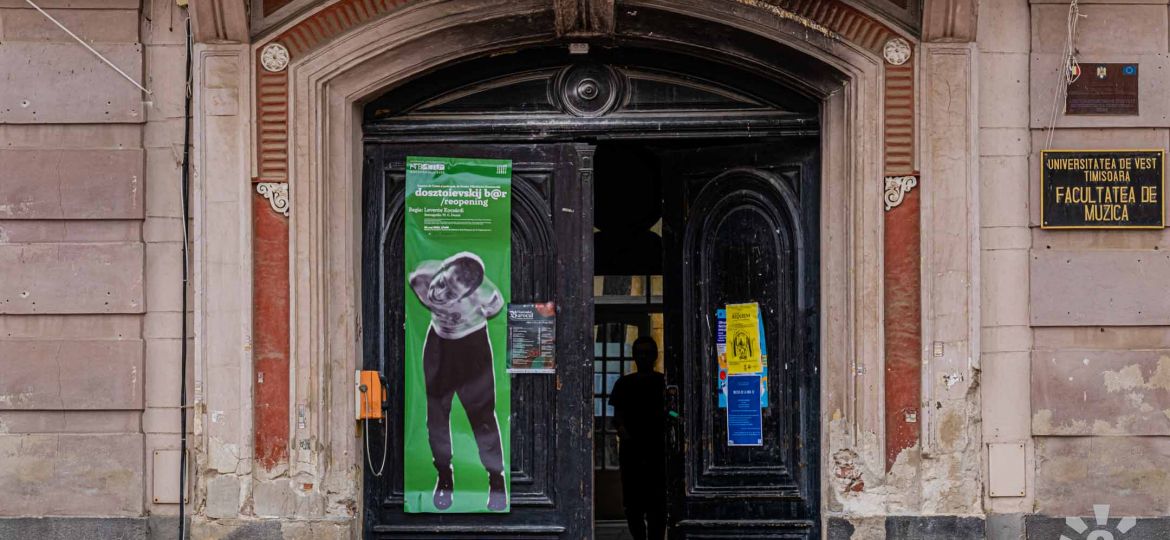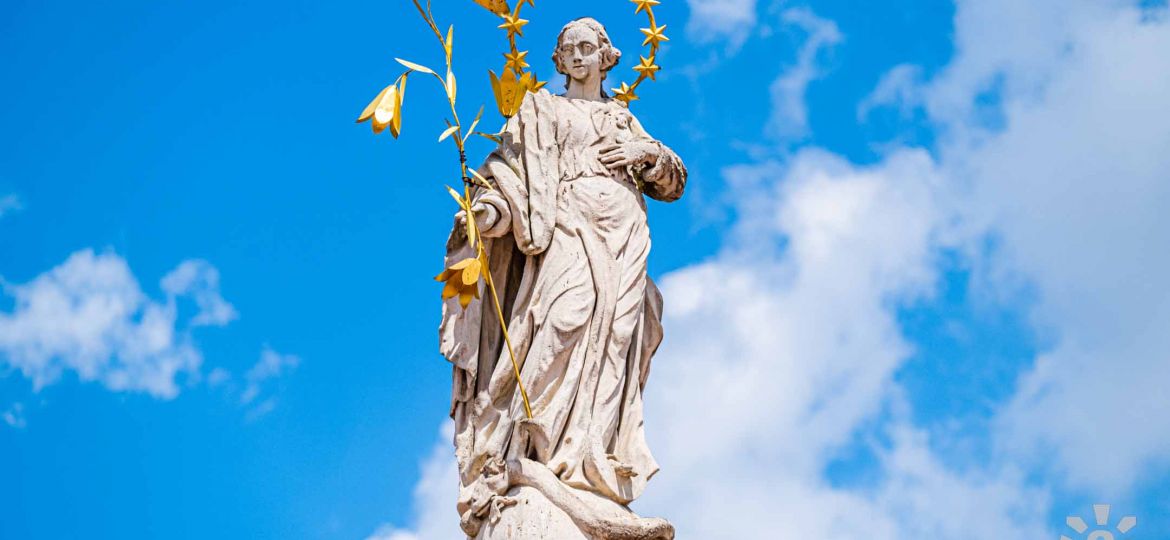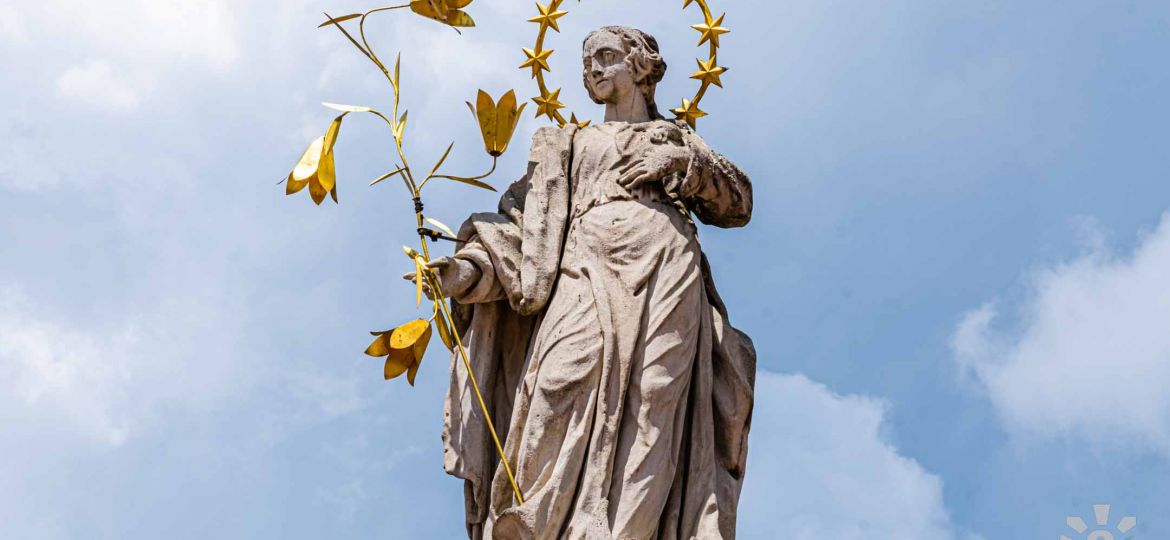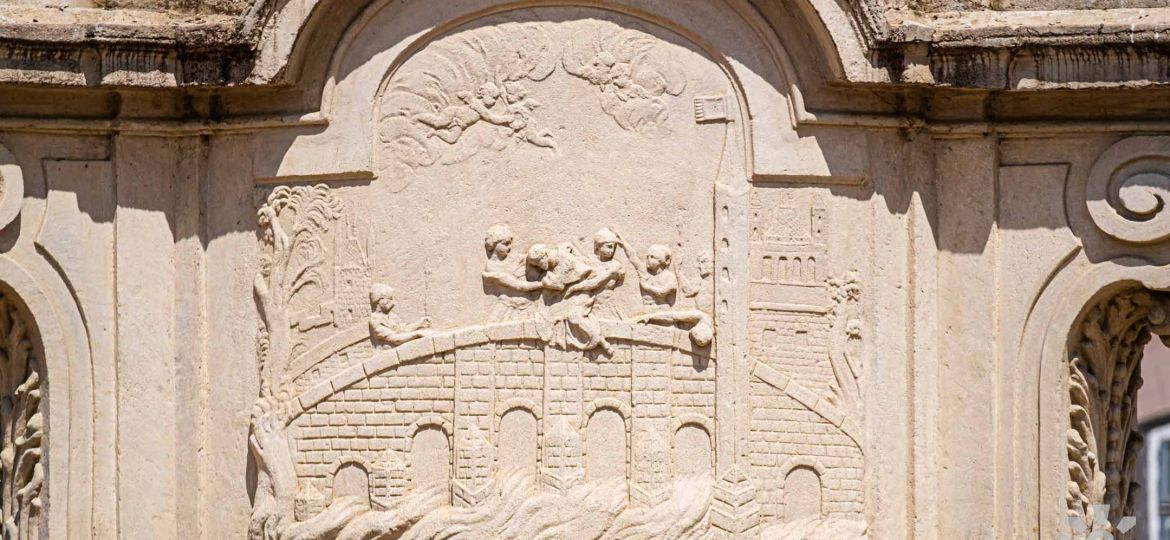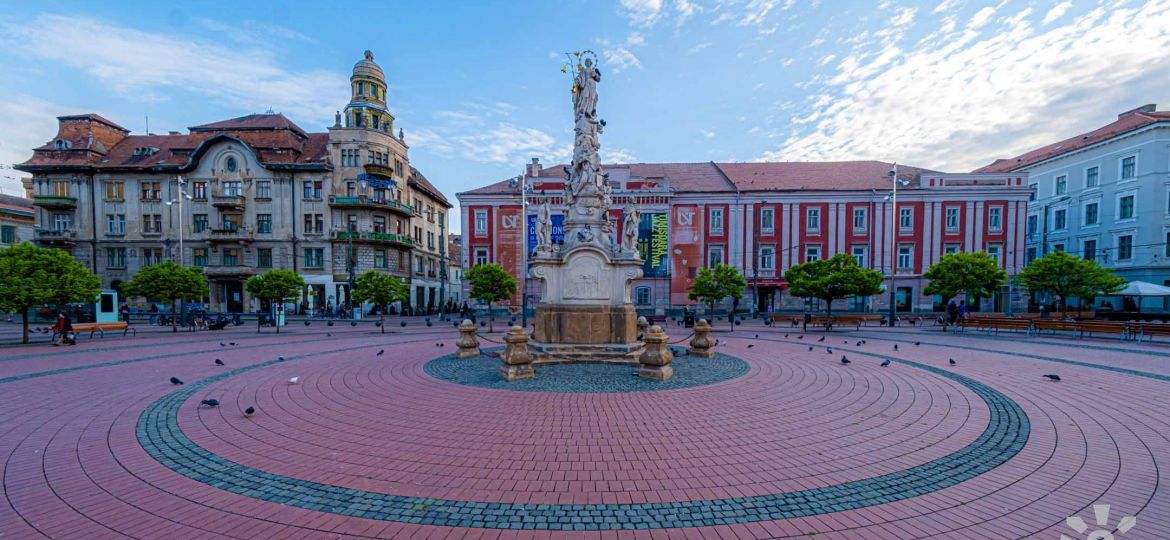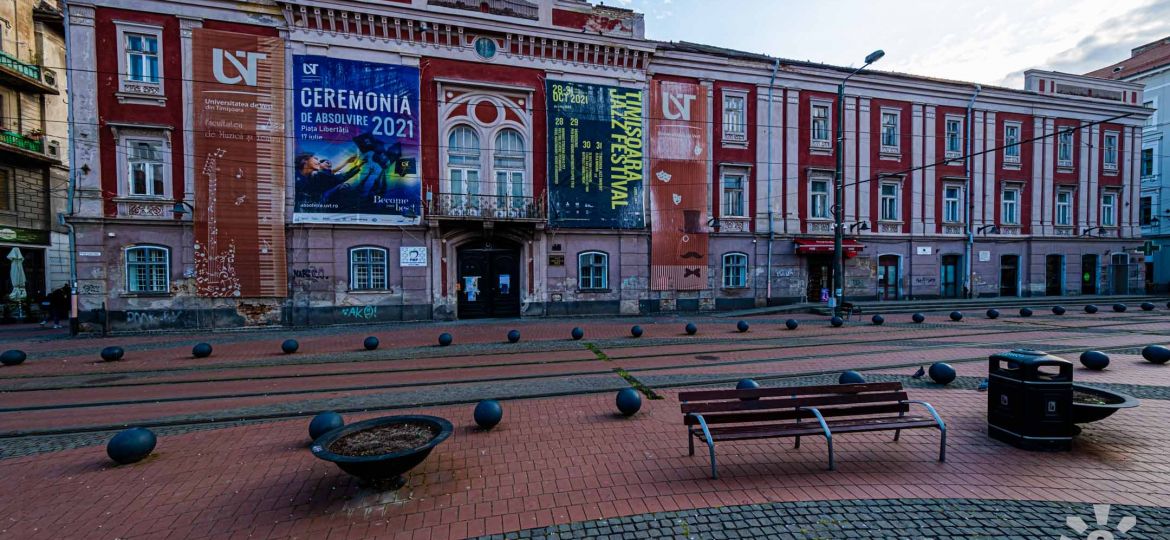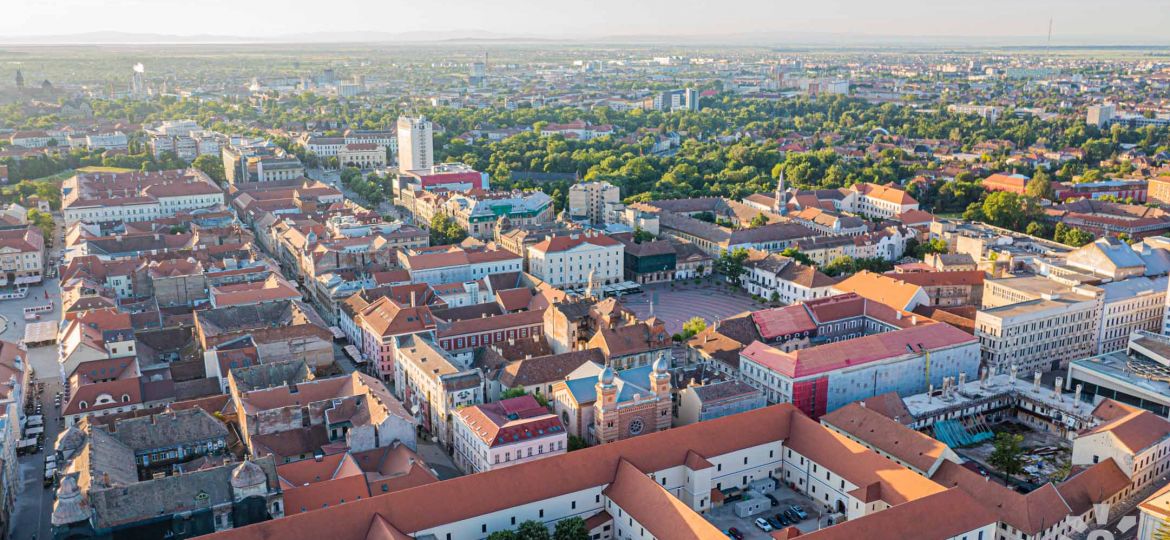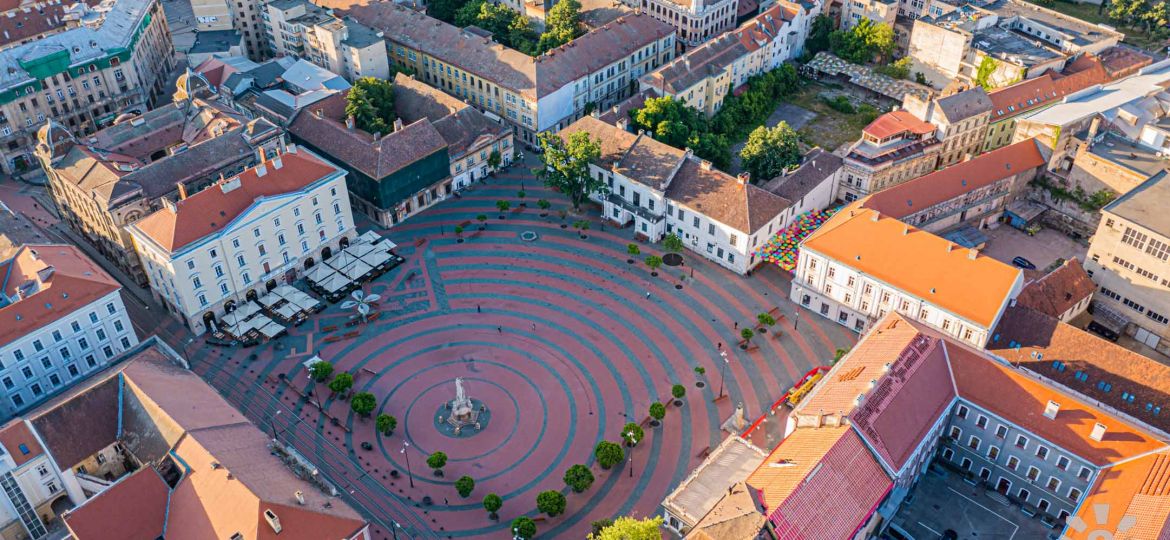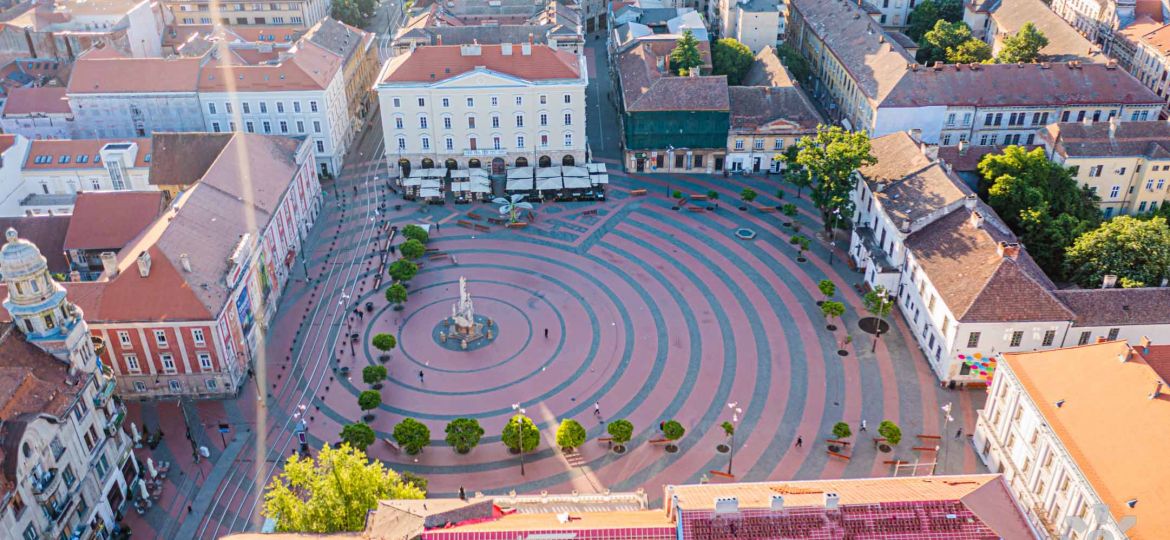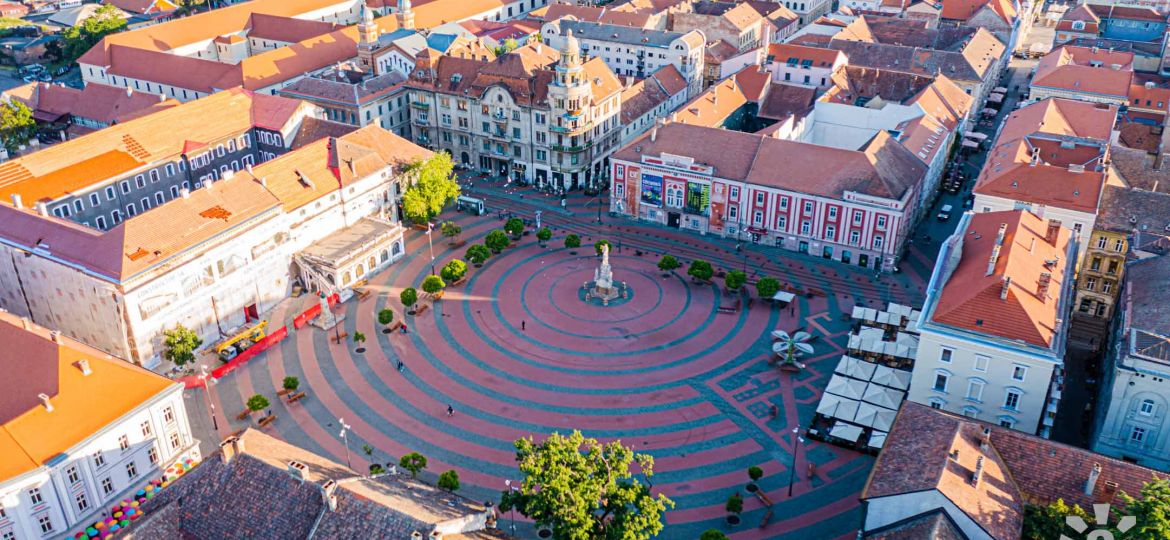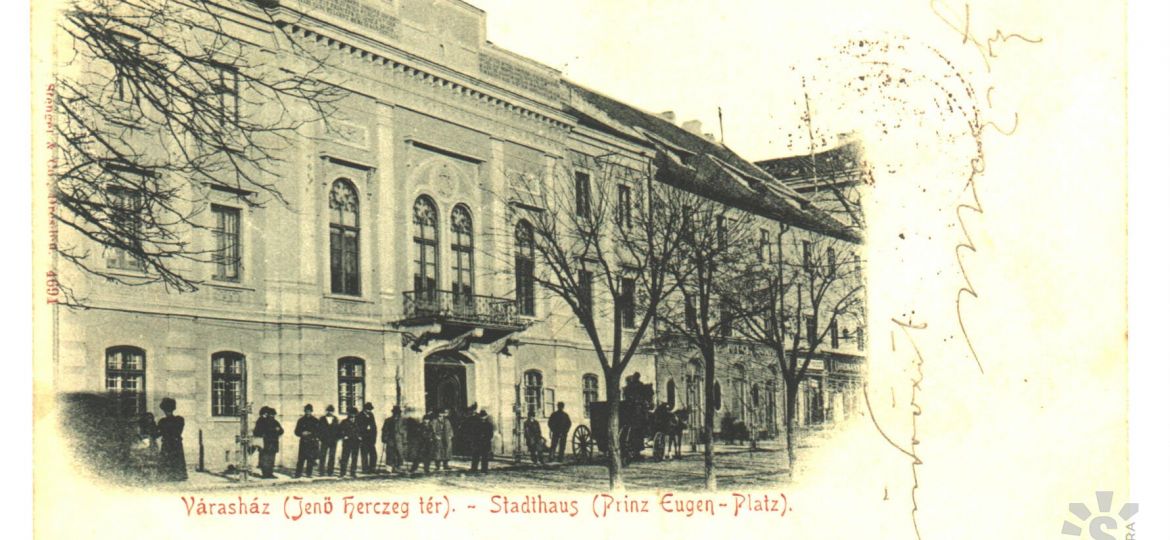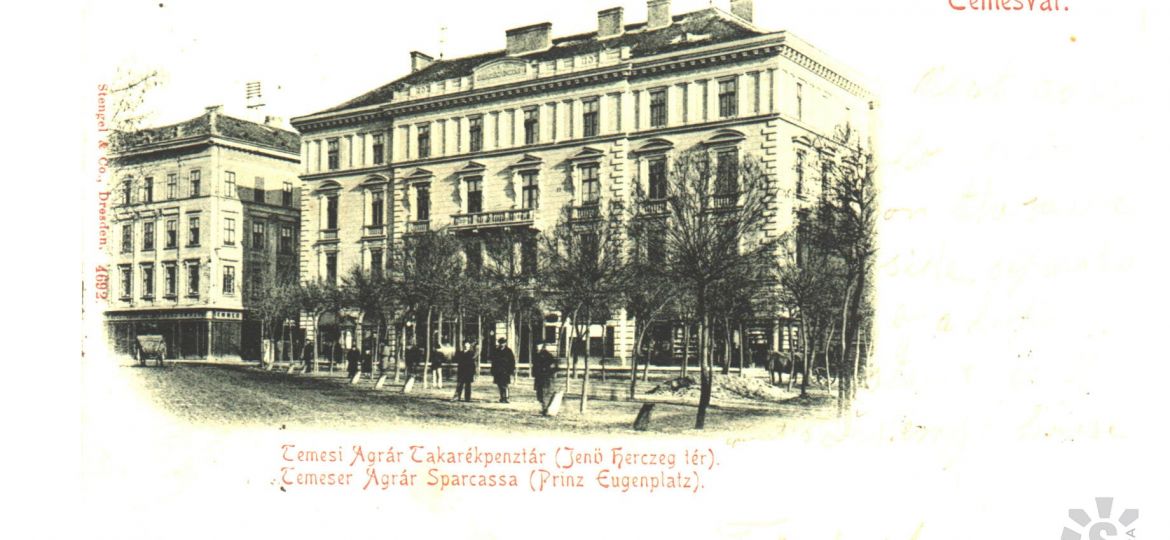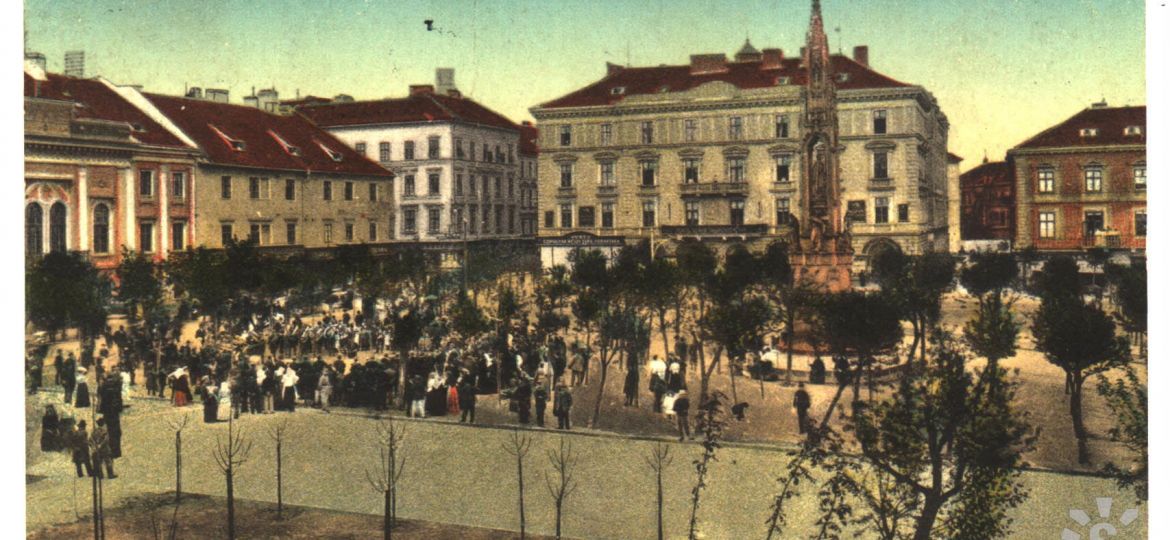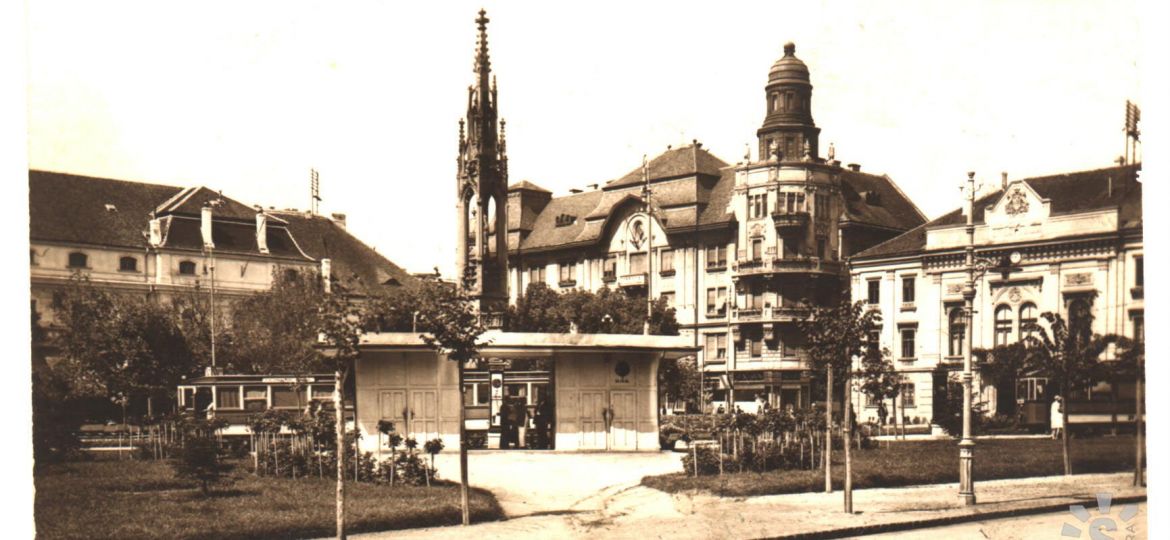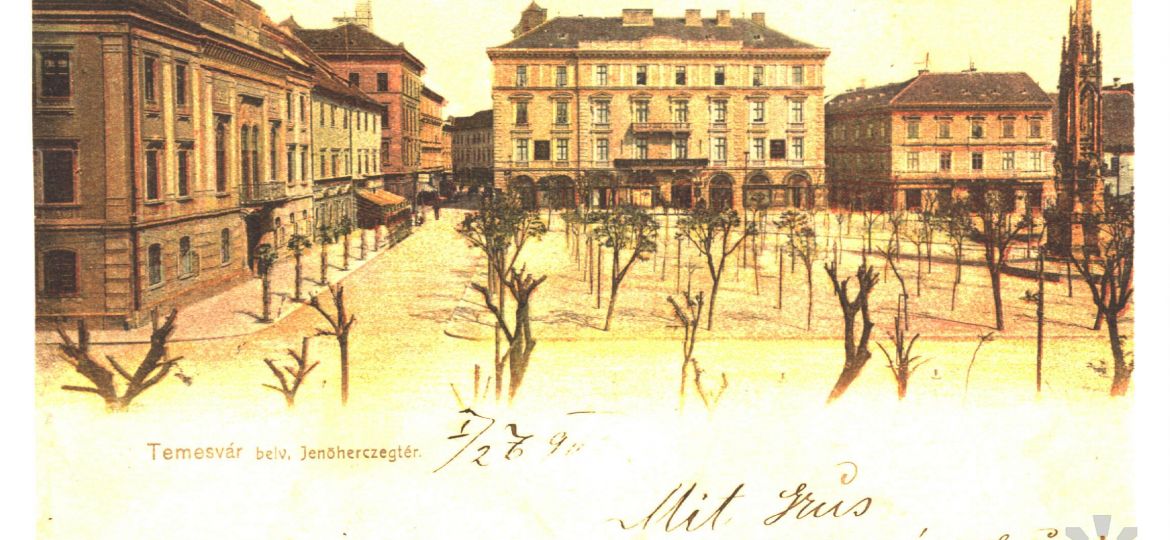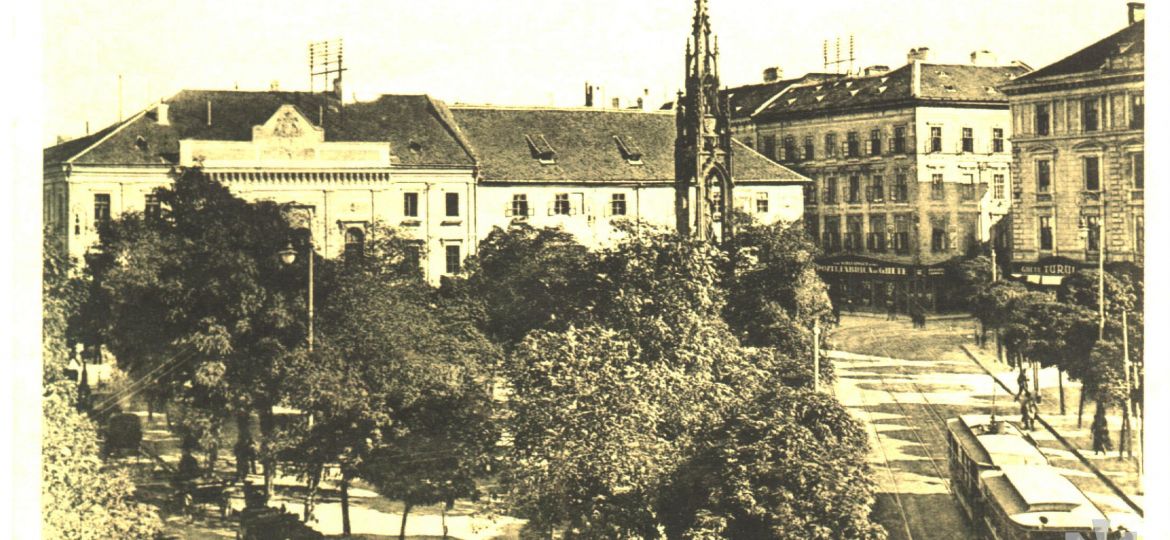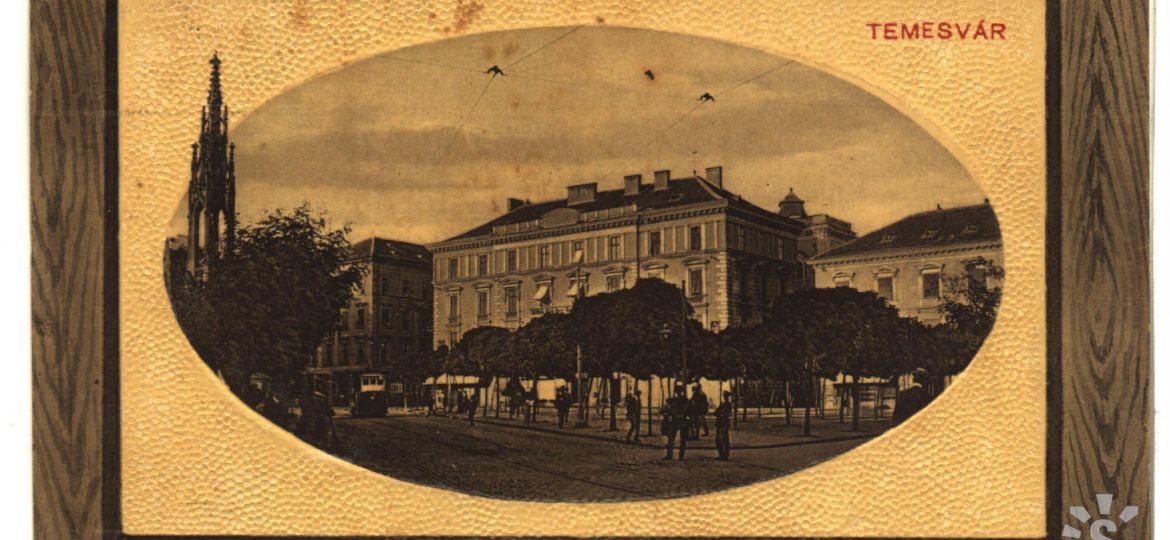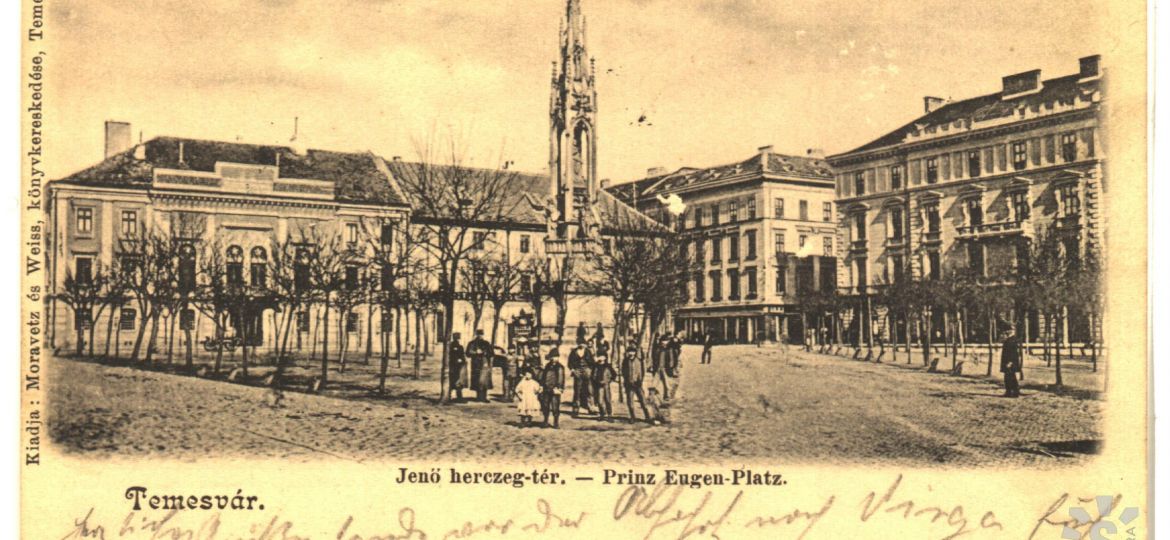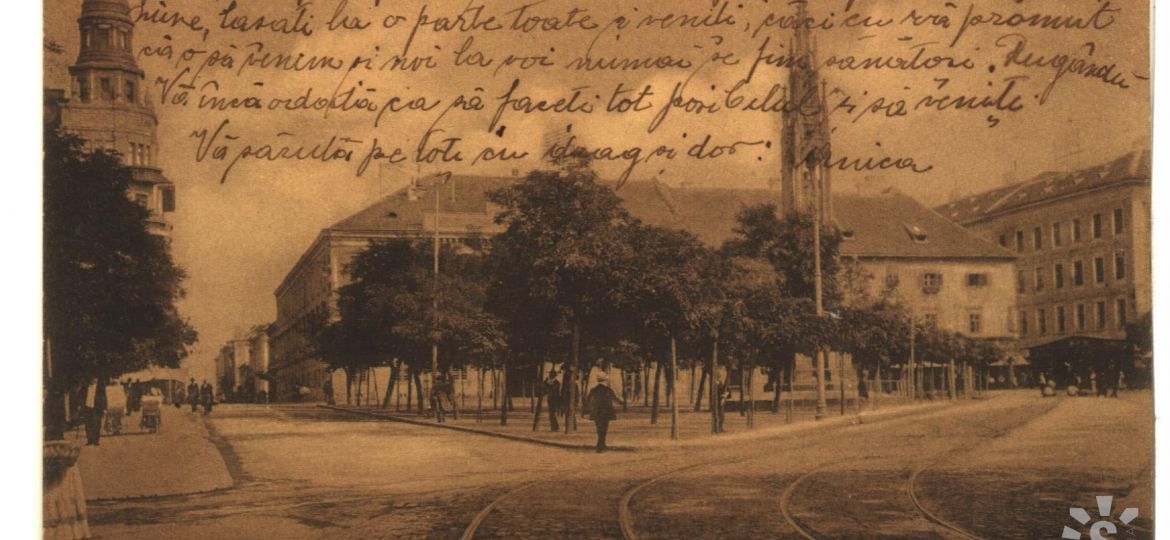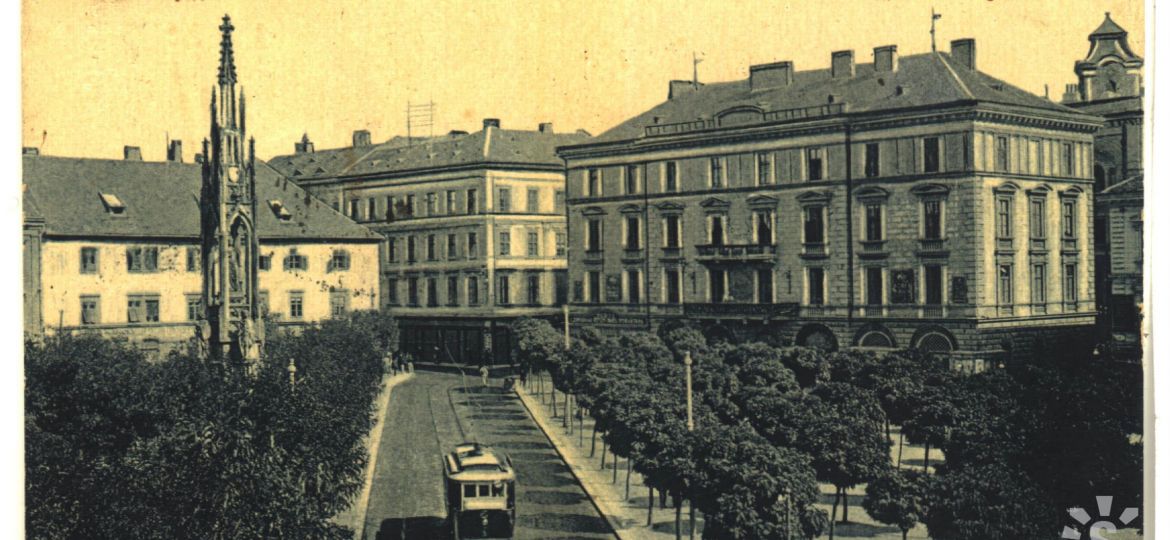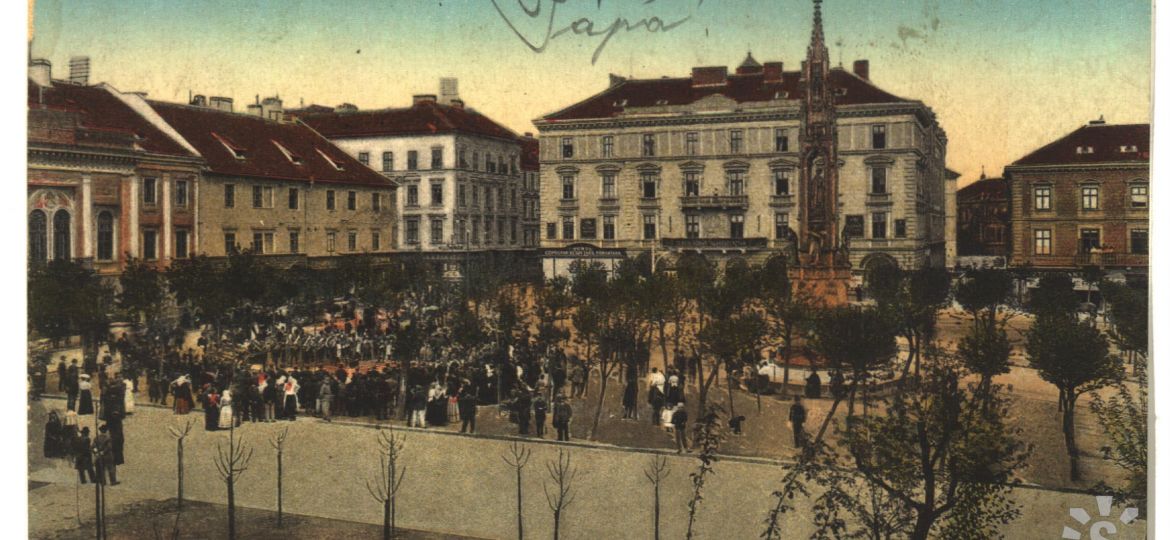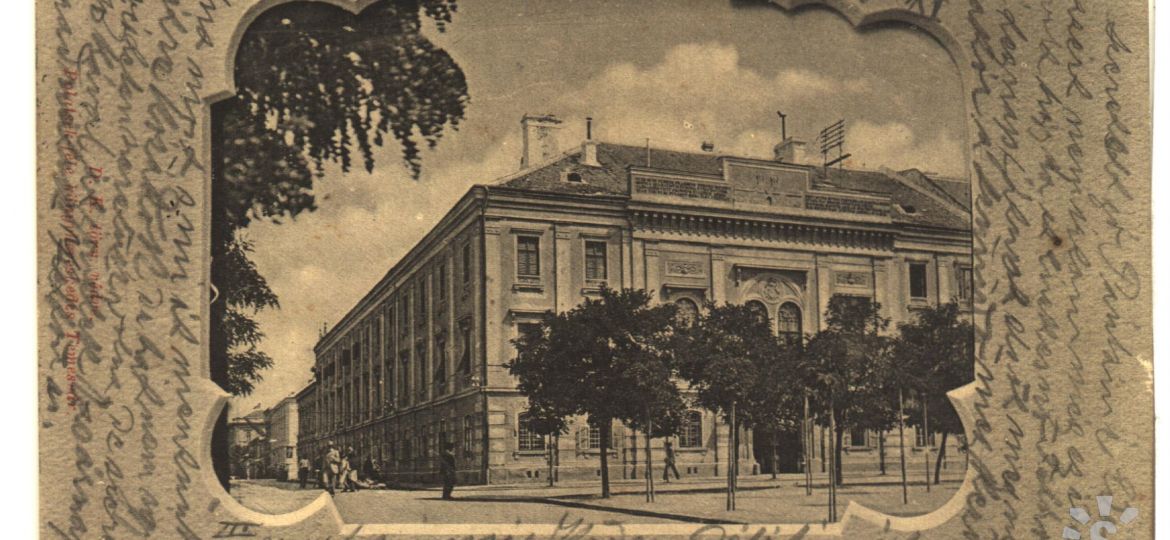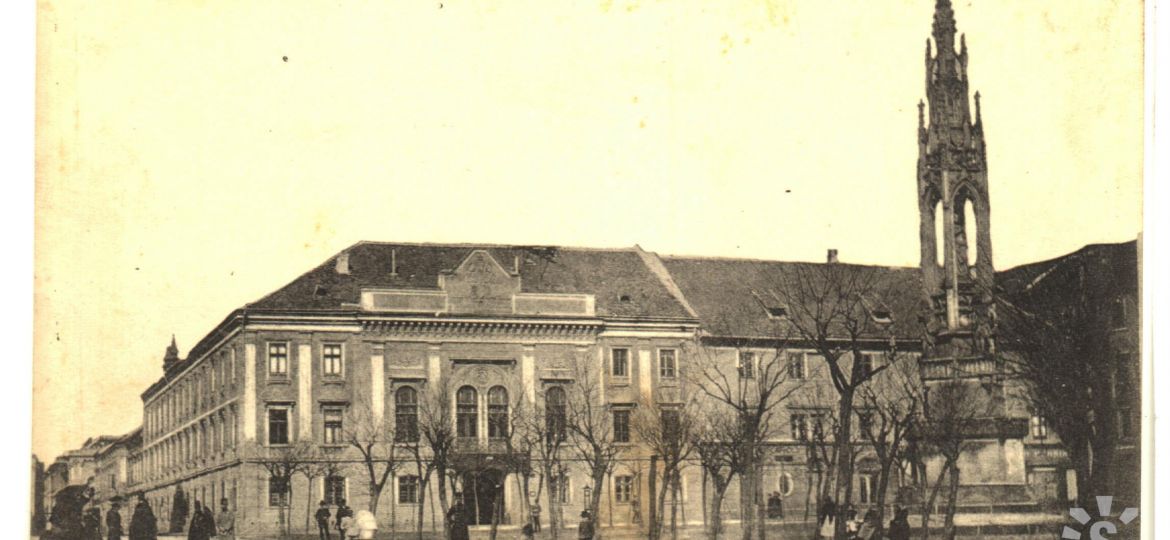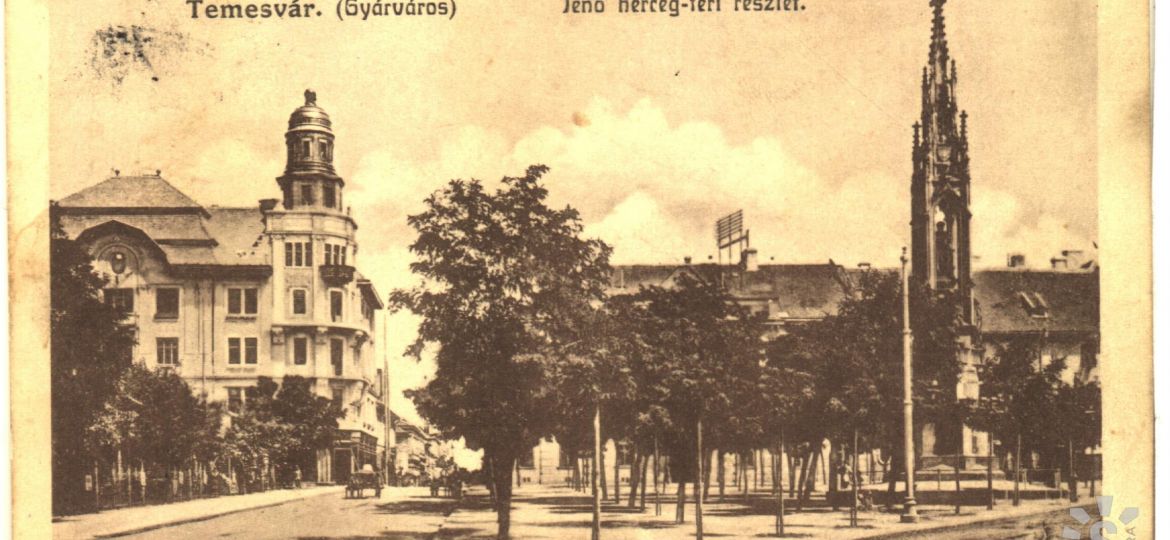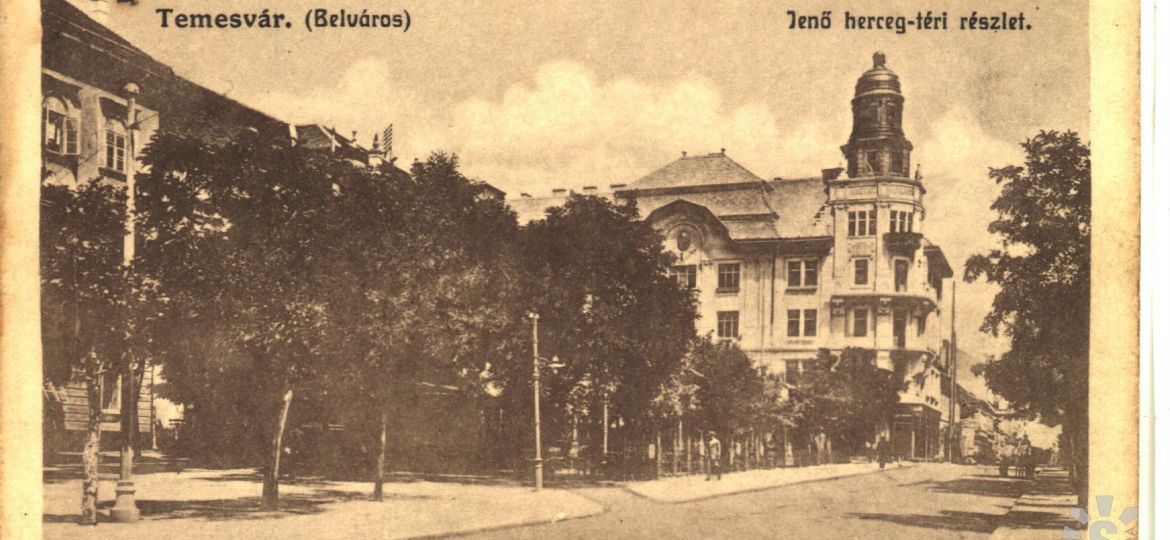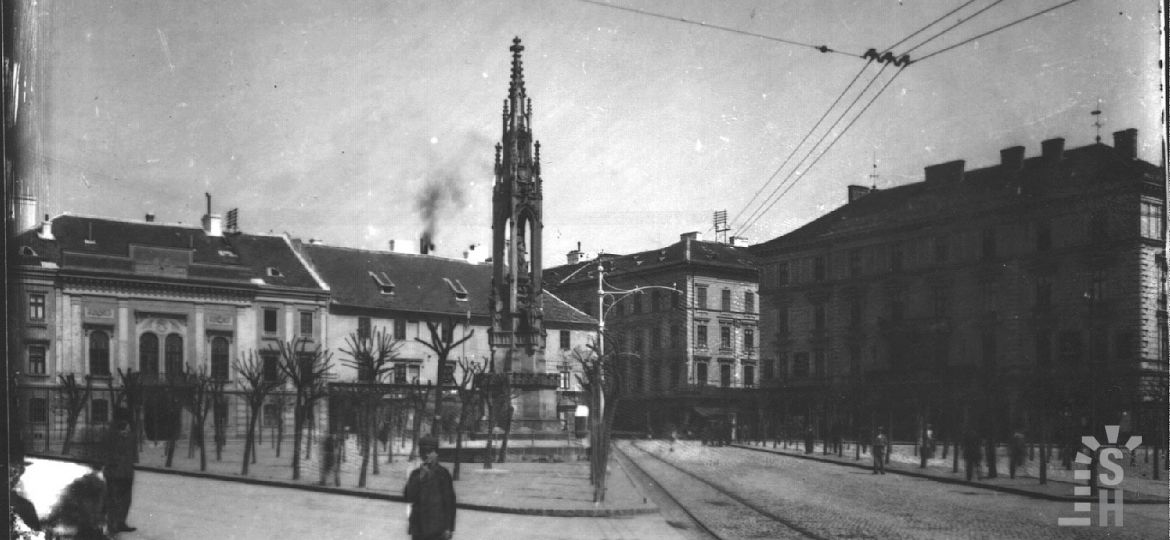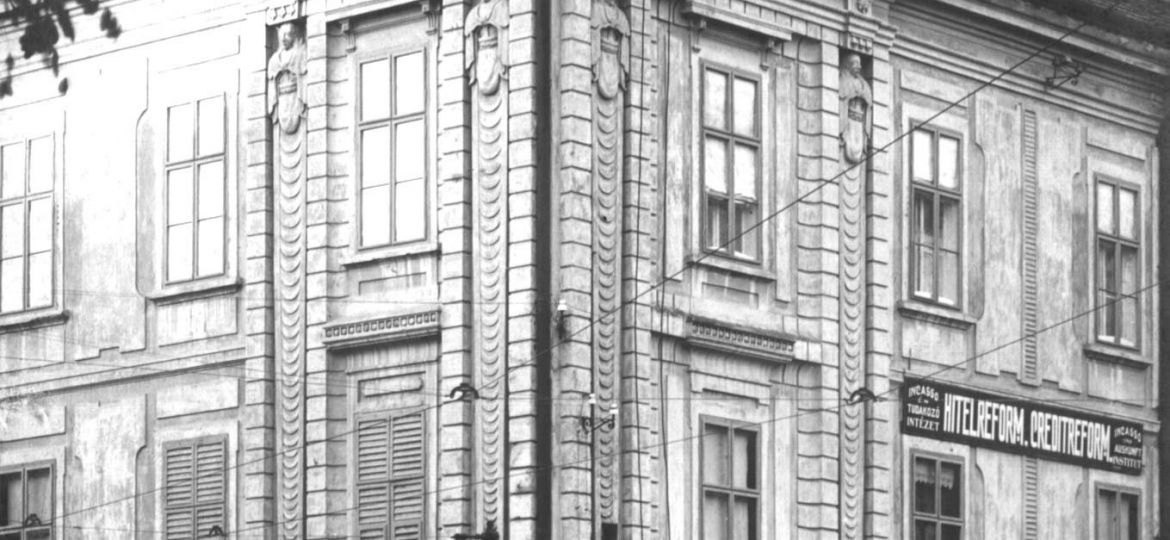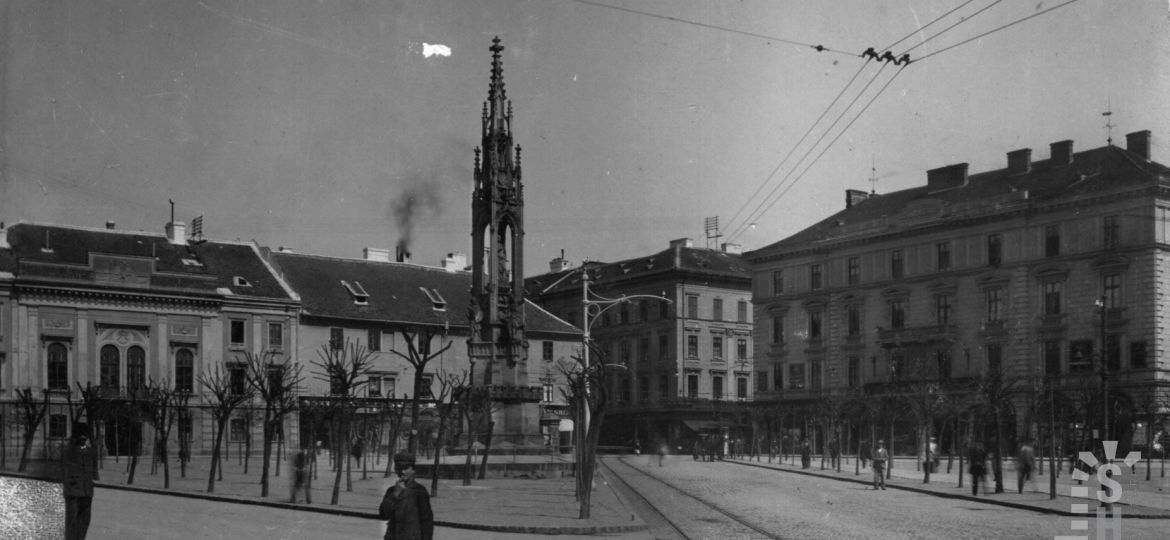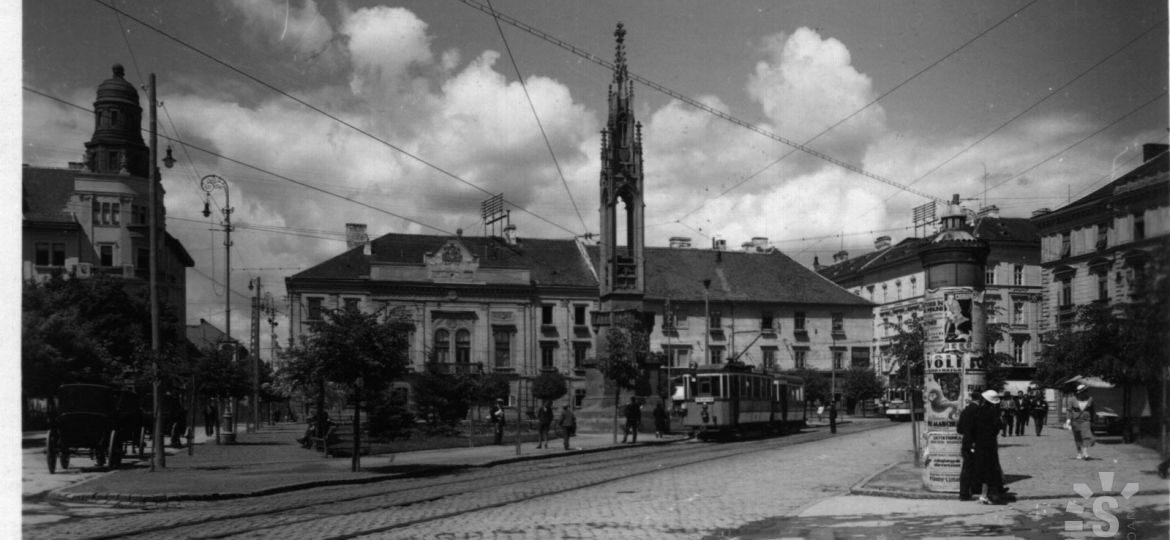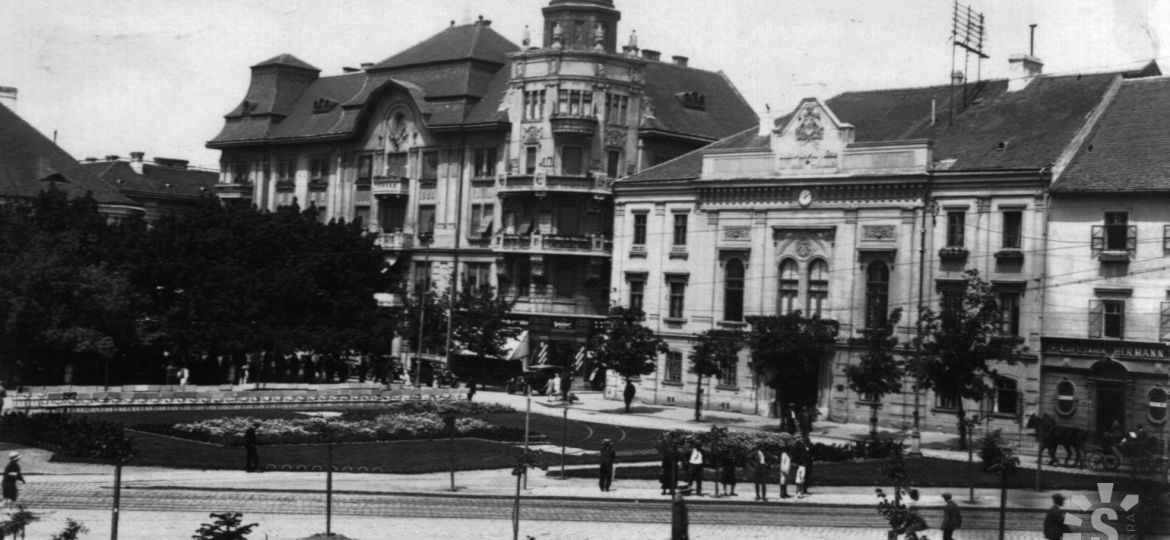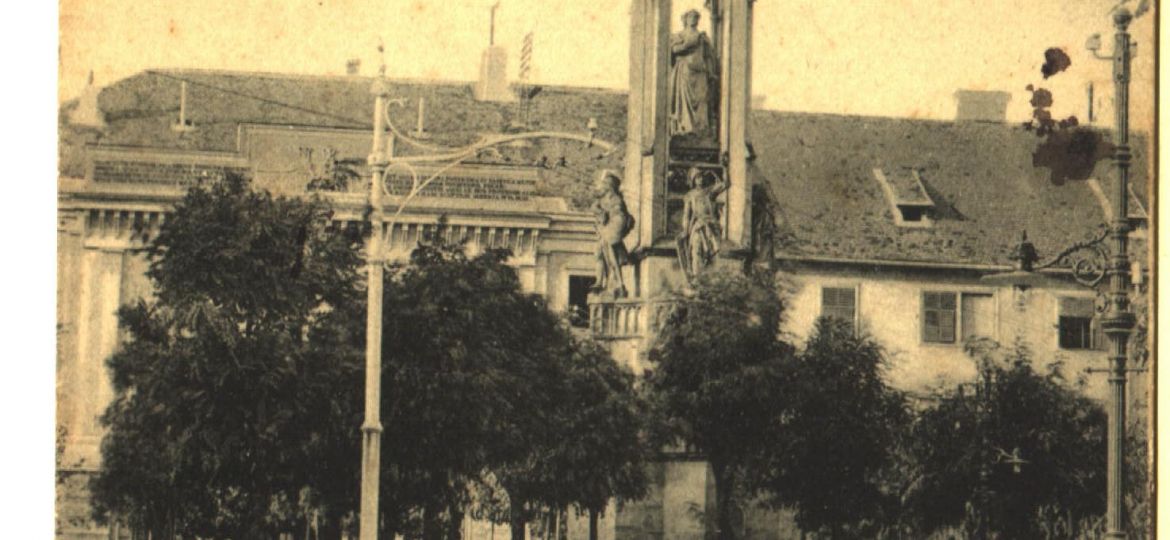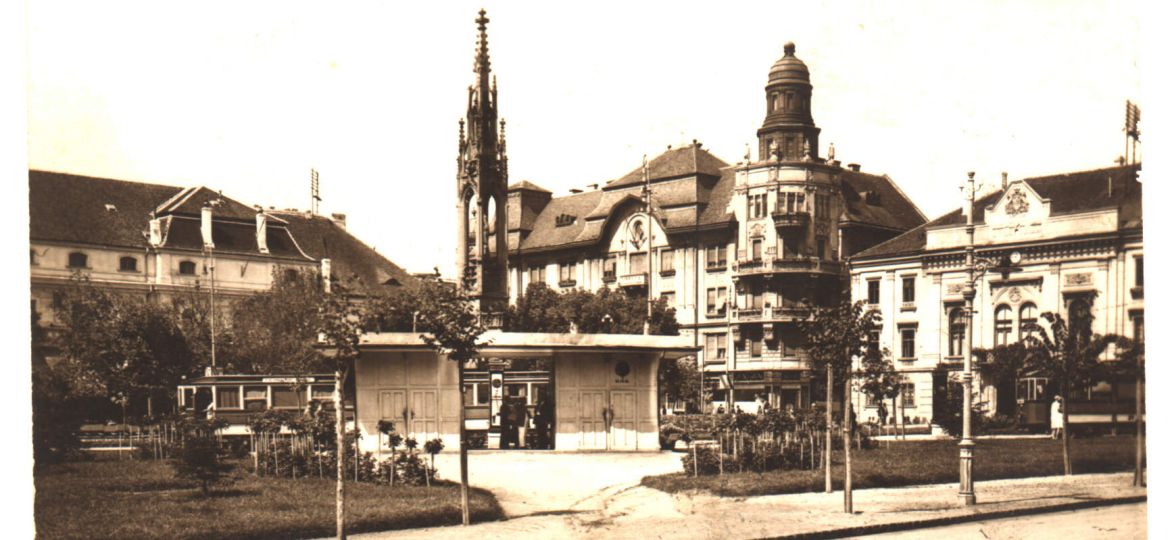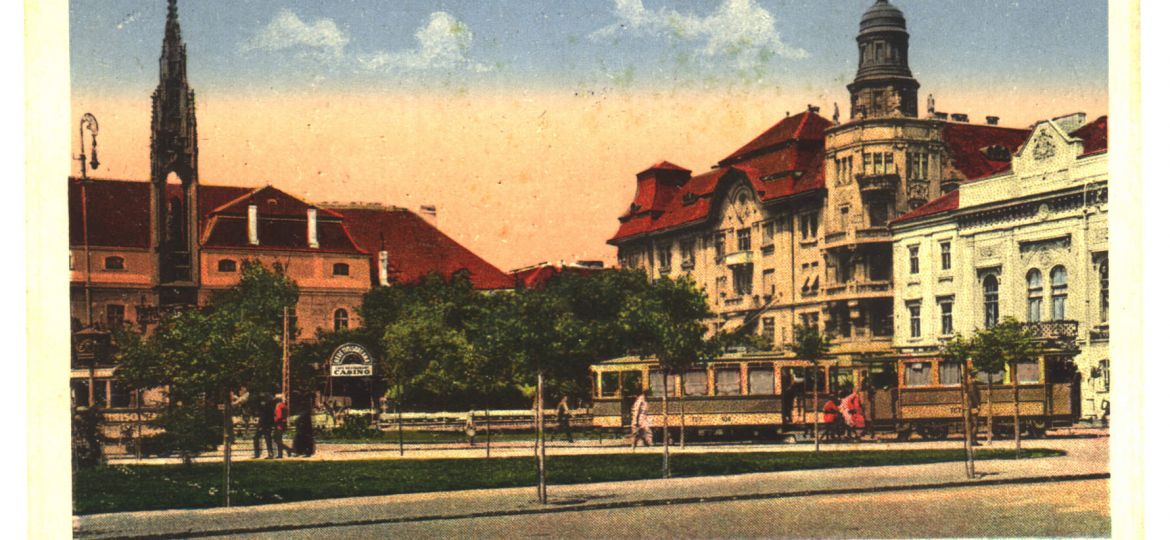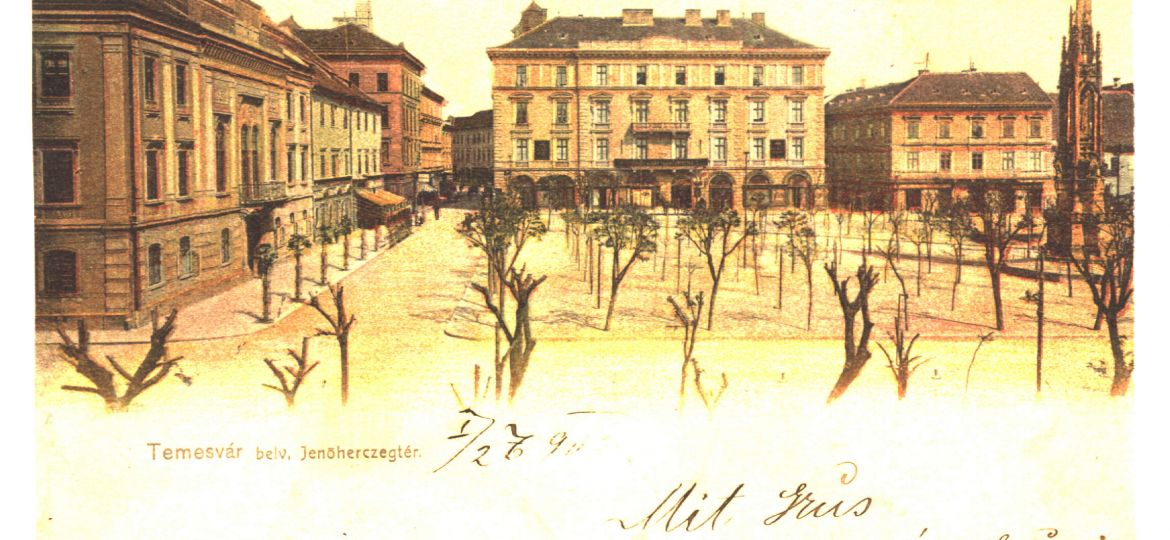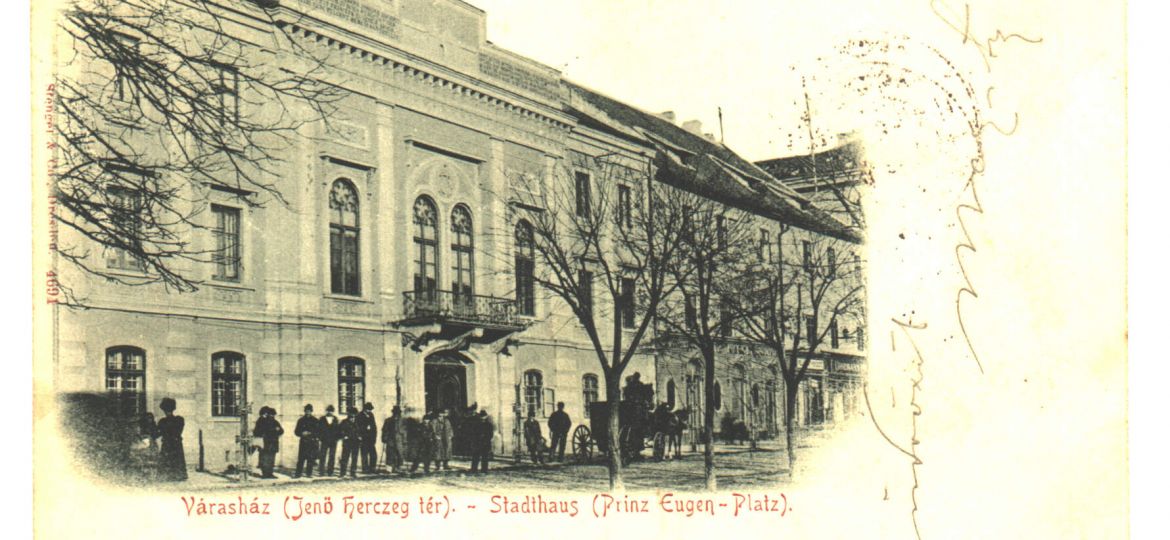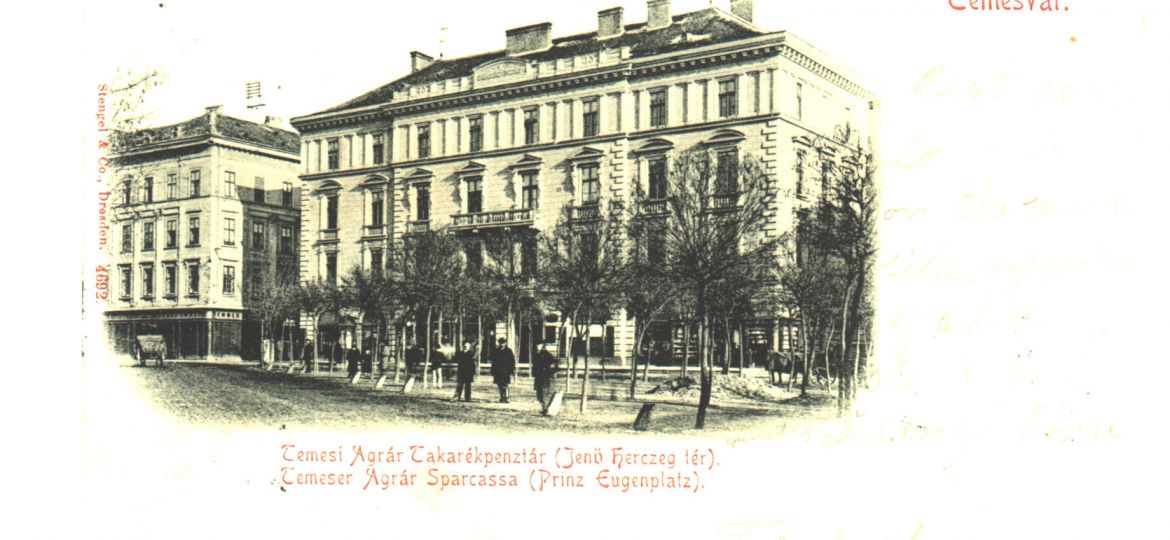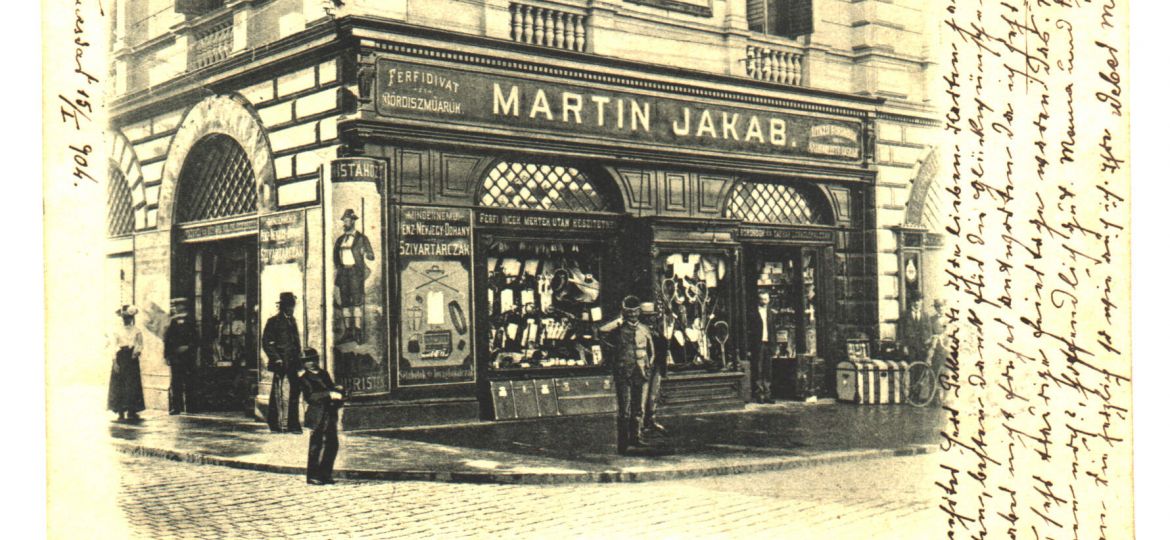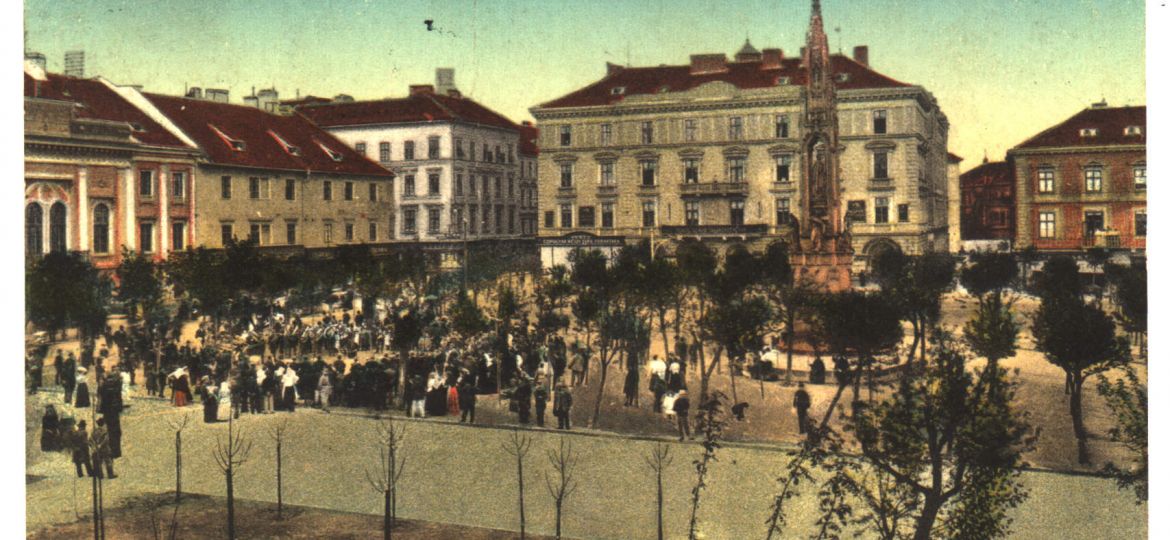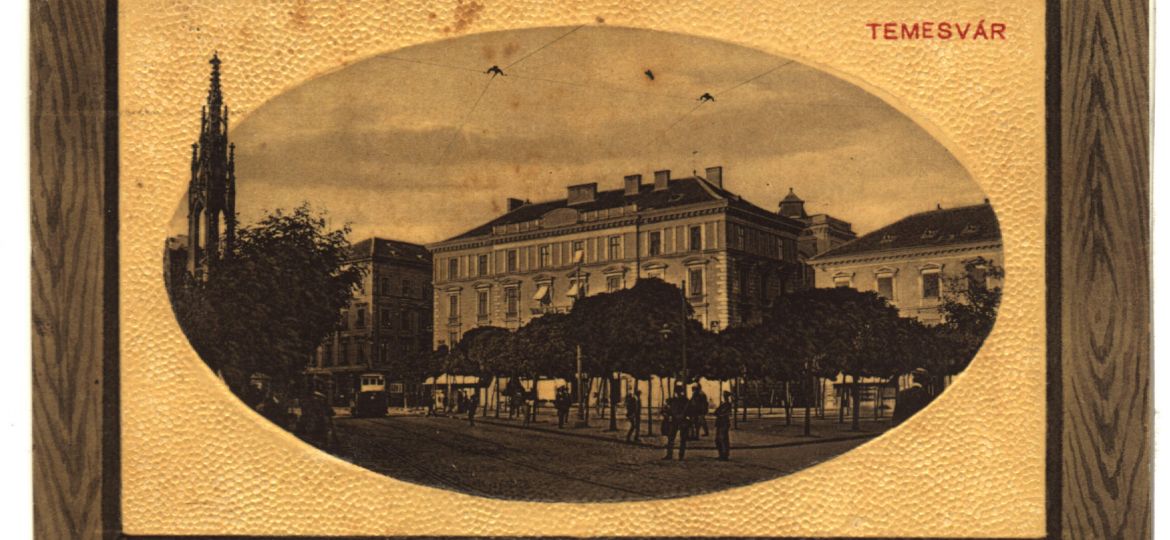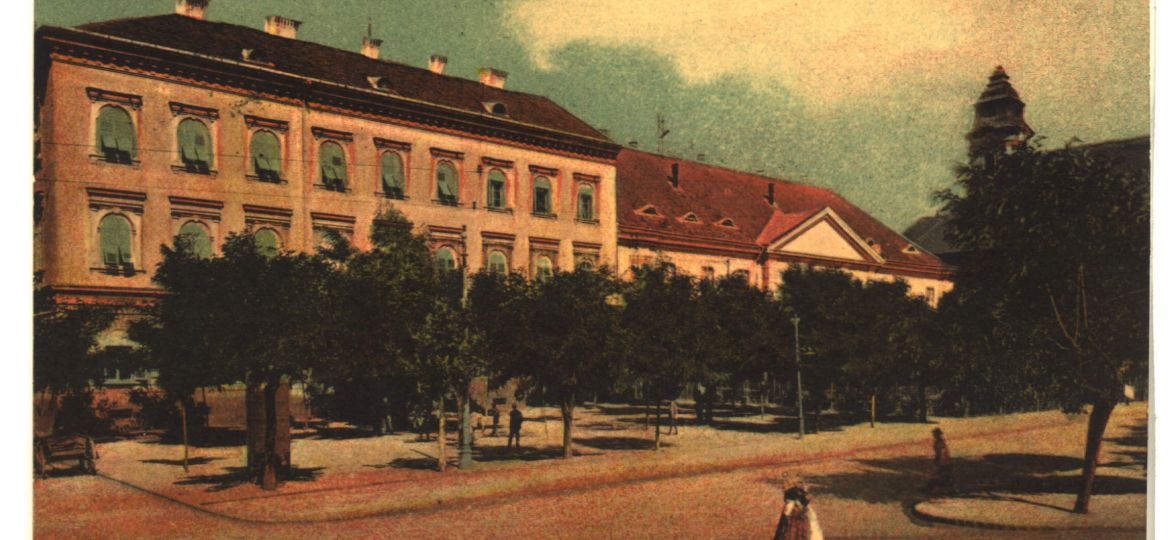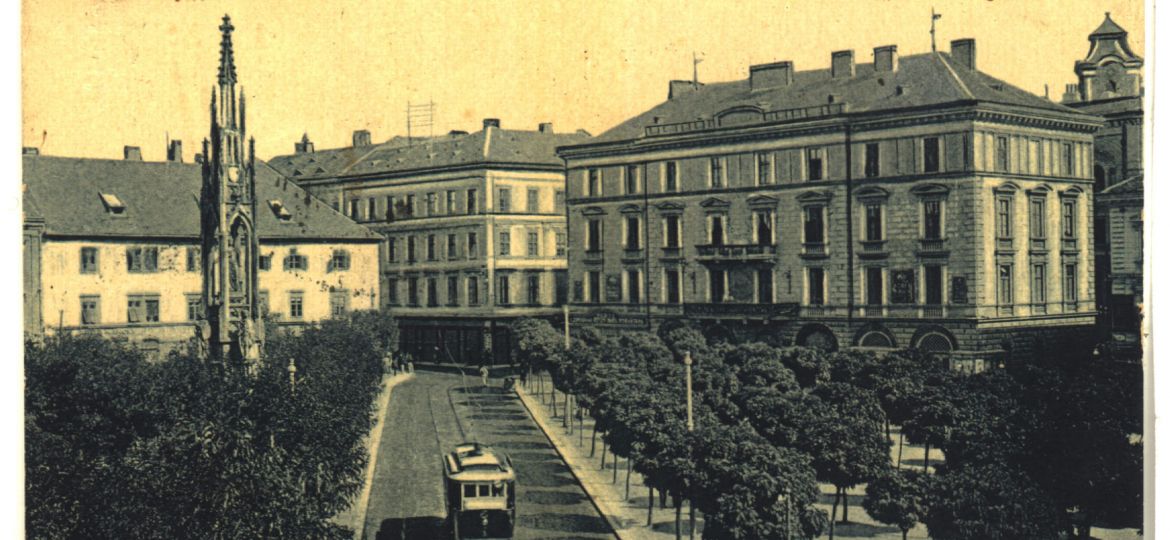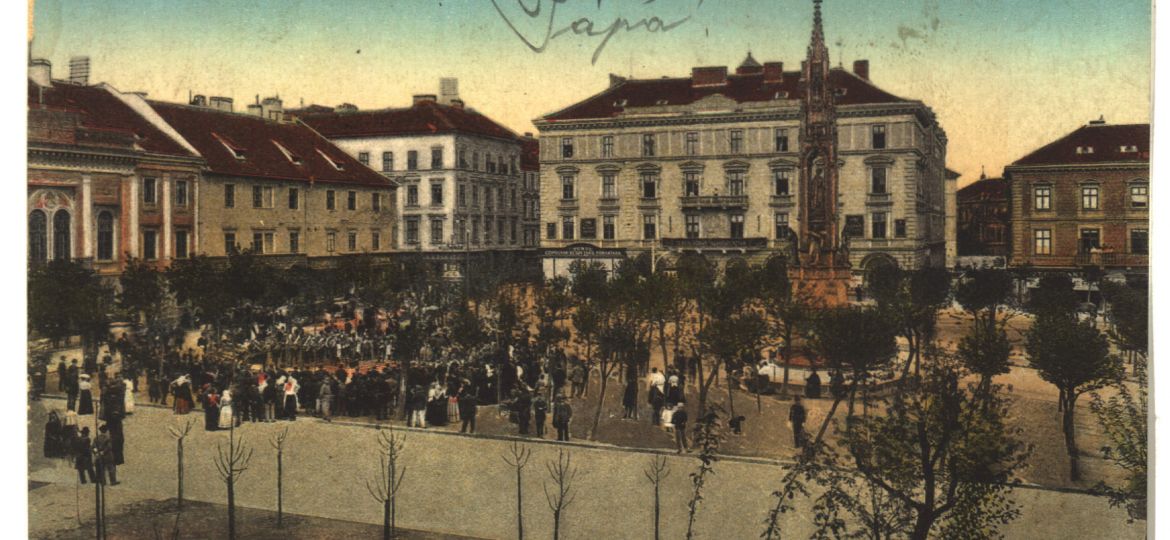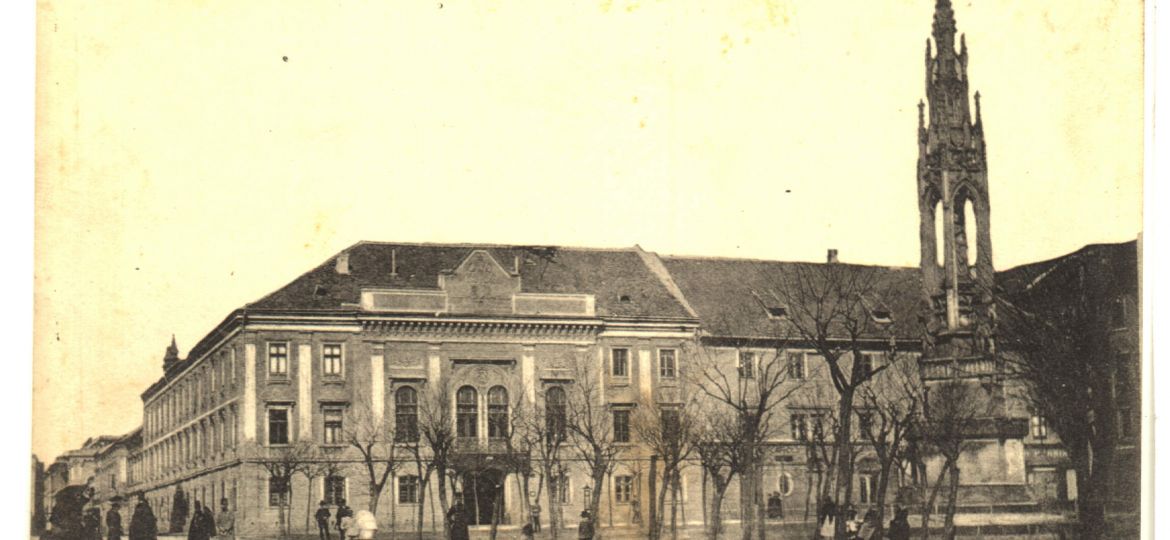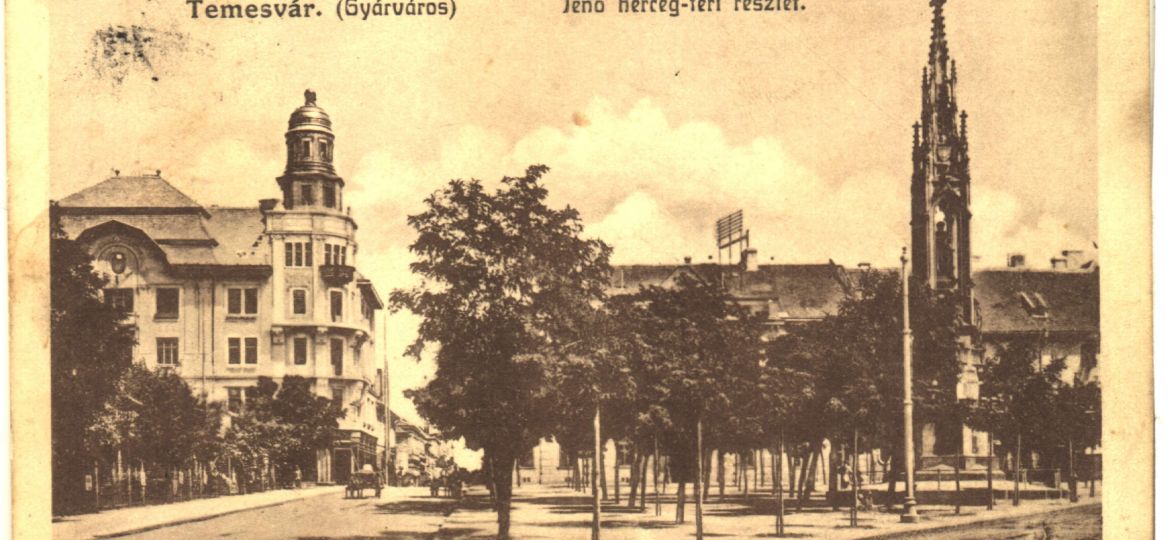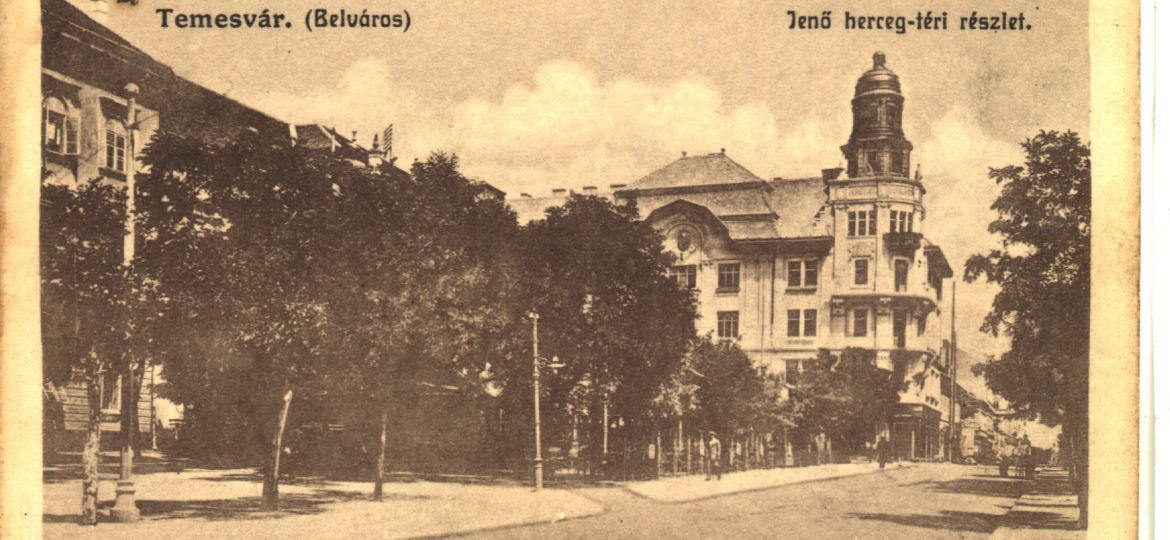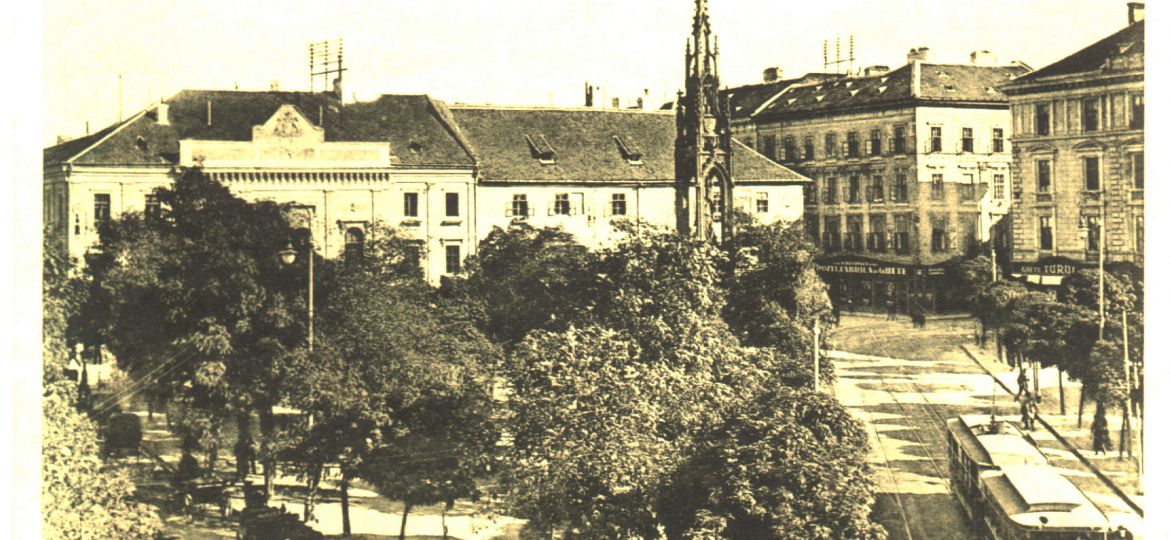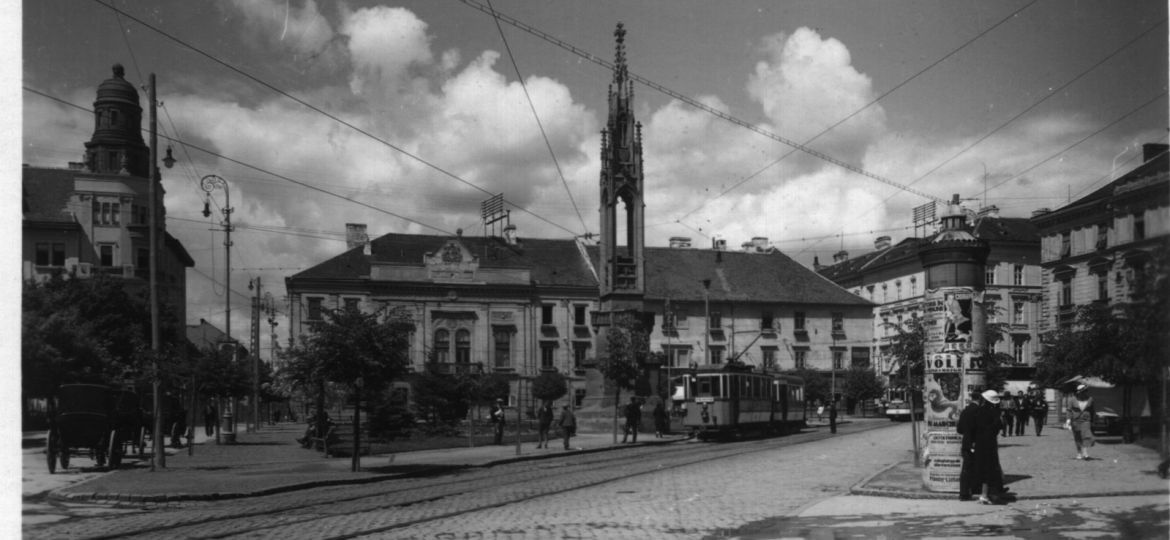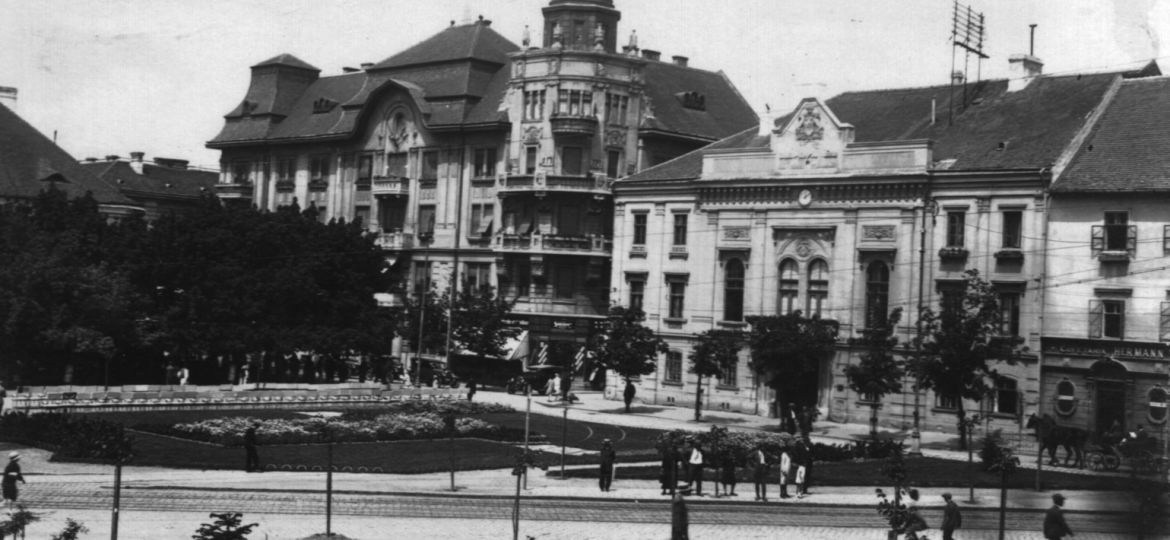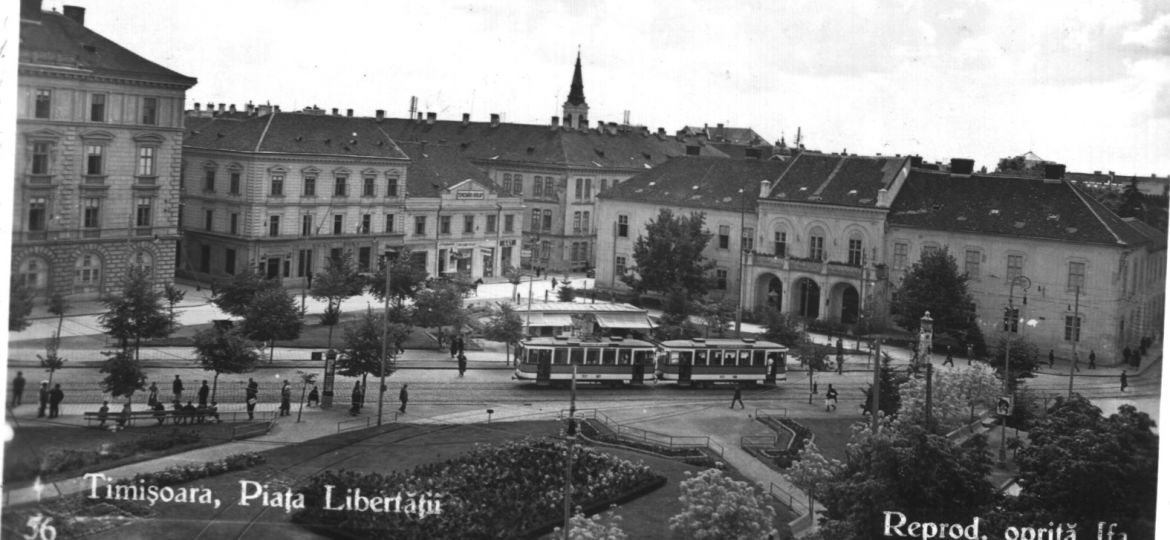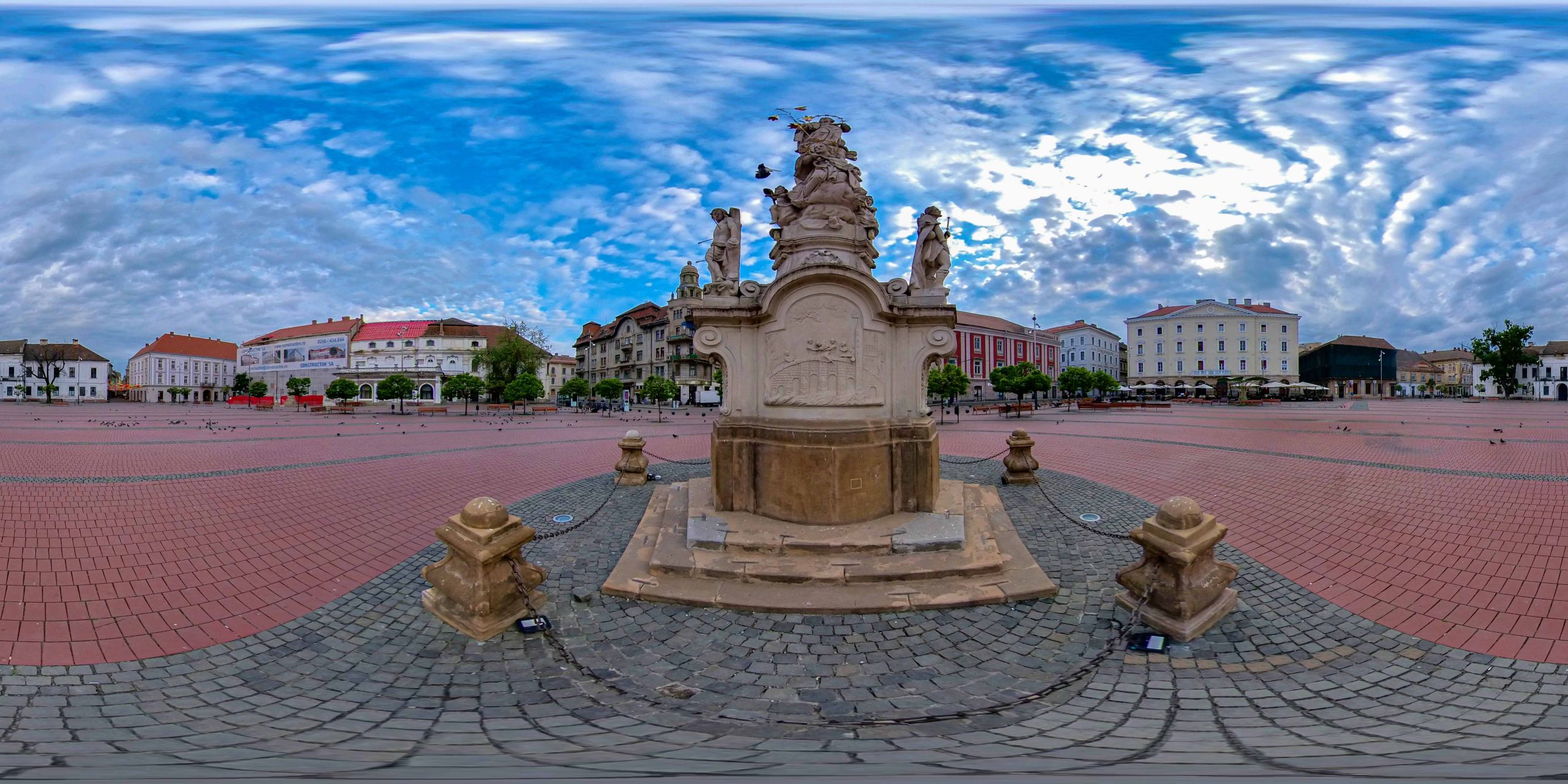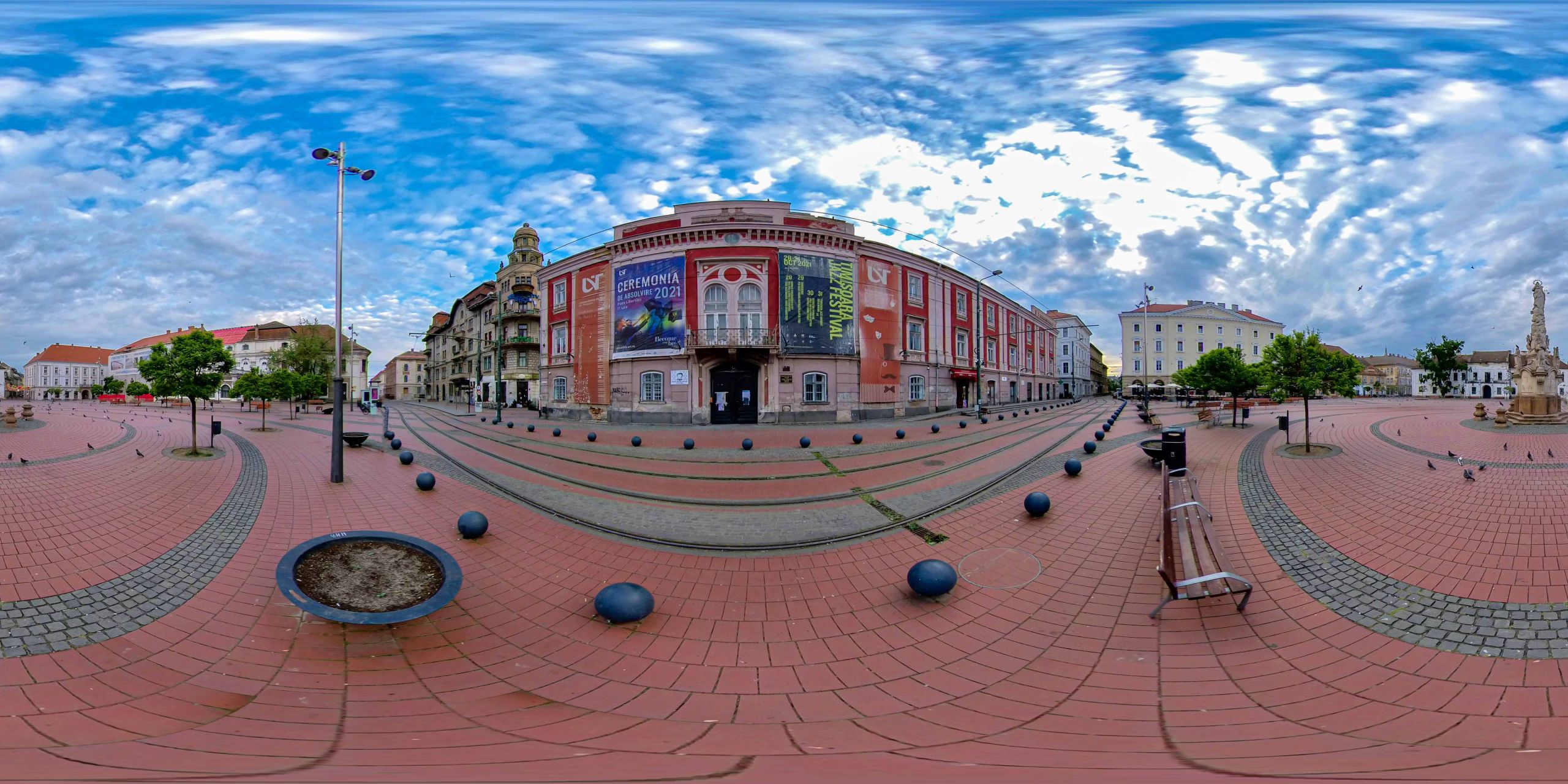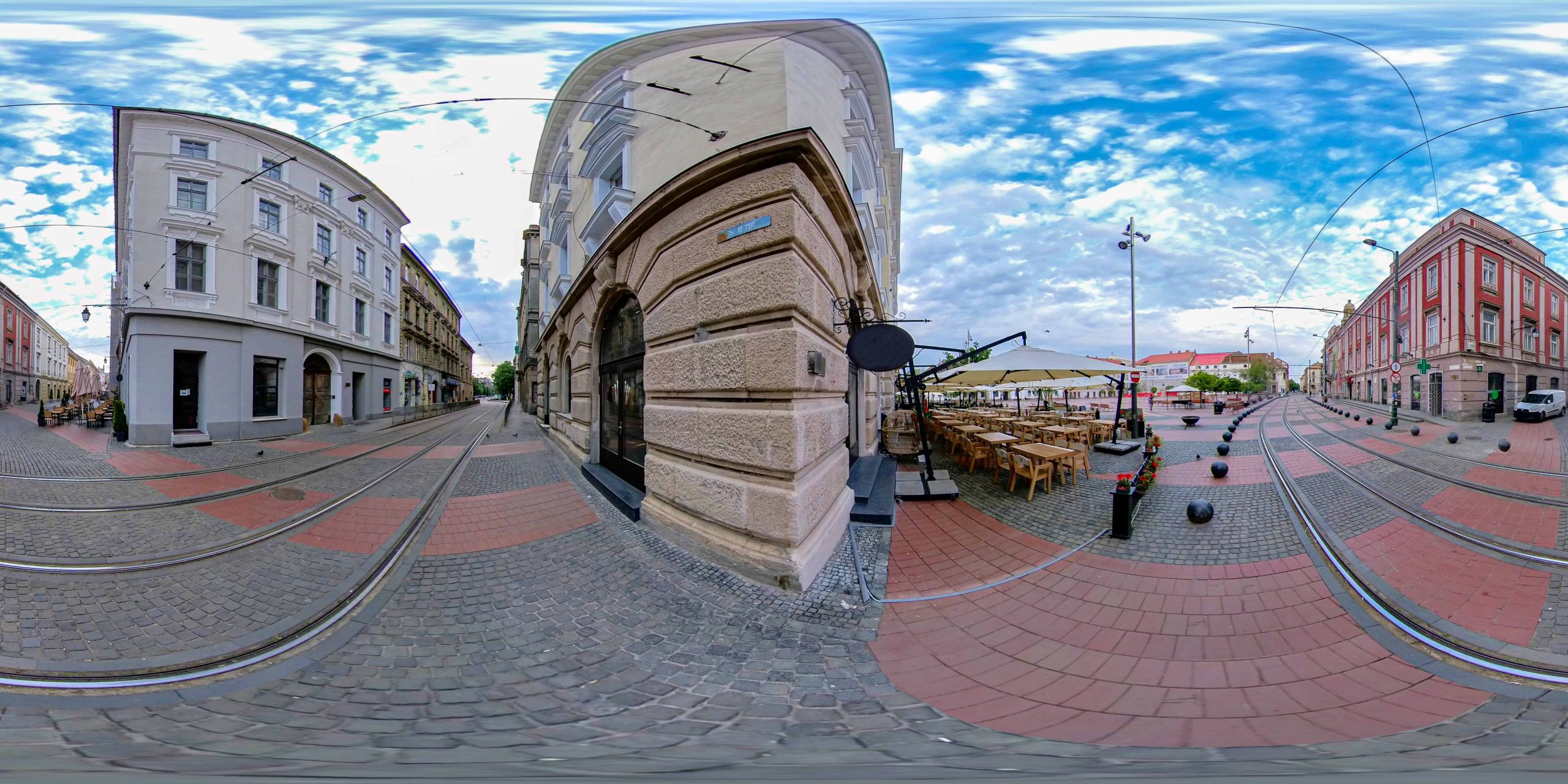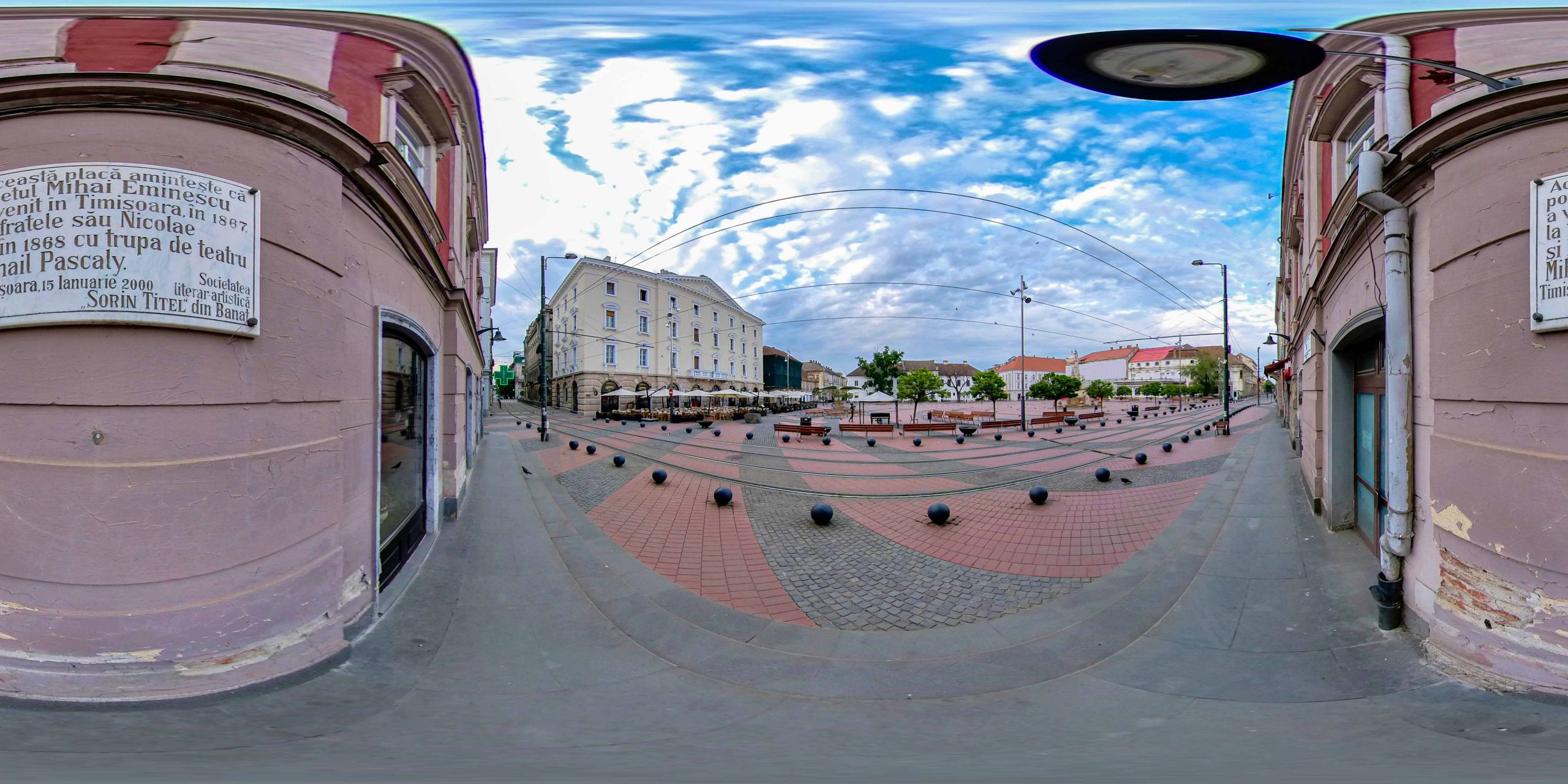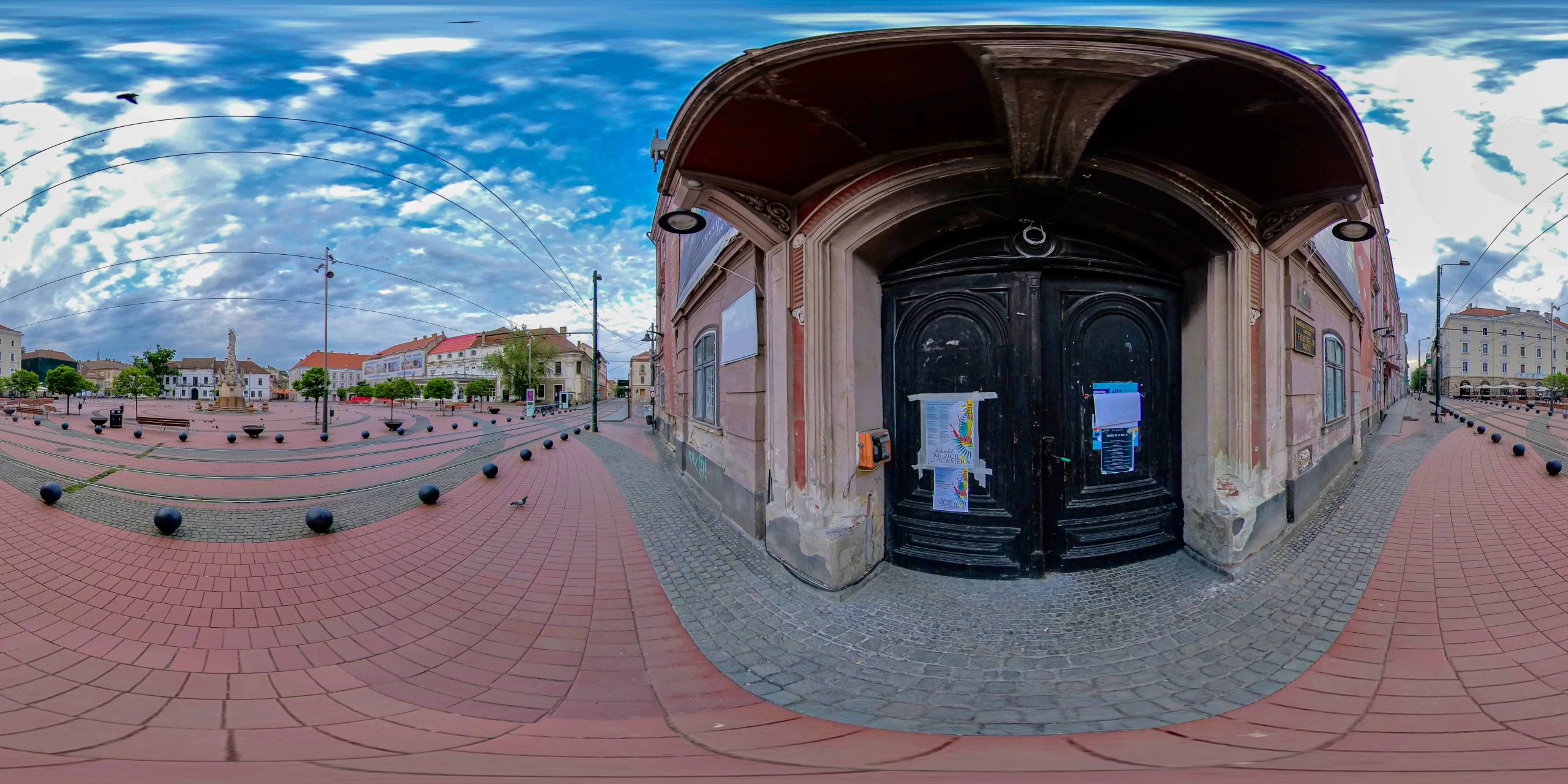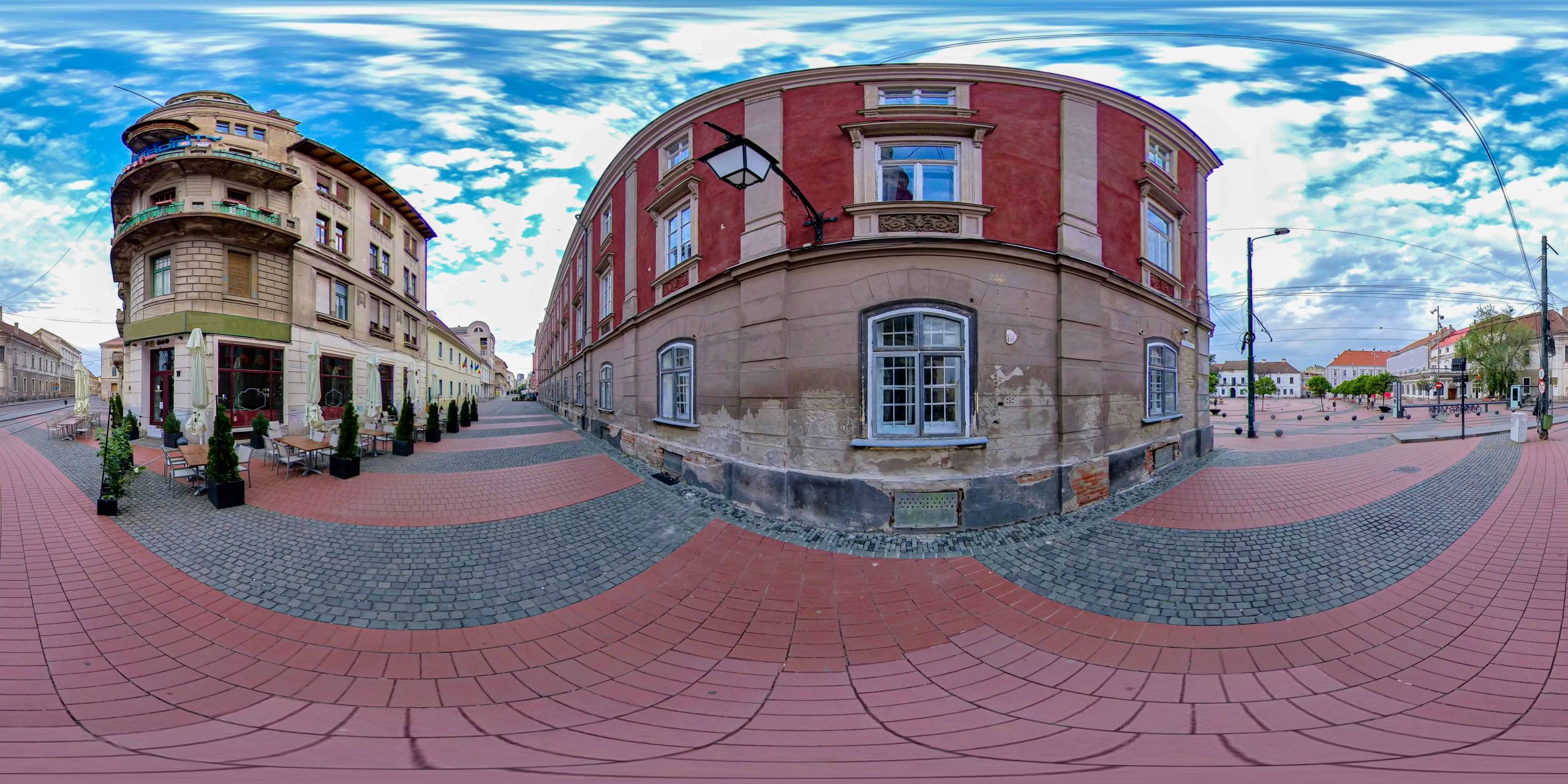In 1782, after Timișoara became a free royal city and the German and Rascian magistrates were unified into a single town hall, a significant renovation of the town hall building and an extension of its premises took place, made by architect / builder Josef Aigner.
Listen to the audio version.
The foundations of the first City Hall of the German community in Timișoara were laid on January 1, 1718. Its leadership stated in a document from 1731, addressed to the Banat Country Administration, that the necessary measures had to be taken for the construction of a town hall. At the end of the same year, the foundation stone of the building was laid, which cost 26,000 guilders to build and housed other city offices. In 1782, after Timișoara became a free royal city and the German and Rascian magistrates were unified into a single town hall, a significant renovation of the town hall building and an extension of its premises took place, designed by architect/builder Josef Aigner.
In the 18th century, the usual town hall meetings took place twice a week, on Mondays and Fridays, respectively, and if the mayor considered it necessary, a special meeting could be scheduled on another day of the week. The mayor and city councilors had to set an example by their behavior and avoid any form of corruption, otherwise, they would be punished according to their actions.
The siege of the fortress by the revolutionary army in 1849 caused damage to the town hall building, so it had to be renovated according to a project developed in 1858. The current building is made in an eclectic style. A century later, the City Hall moved to its current location.
In the center of the square is the monument St. Mary, created by the sculptors Wasserburger and Blim between 1753 and 1756 after the project of Raffael Donner. The Baroque monument was commissioned in 1753 and sculpted in Vienna, and was erected in the market in 1756, at the initiative of the Congregation of St. Nepomuk, on its pedestal being episodes from the life of St. Nepomuk. This statue, commemorating the plague epidemic of 1738-1740, has replaced an older statue of Saint Nepomuk, which is now in front of the Millennium Church in Fabric. The statue of St. Mary was replaced after the revolution of 1848-1849 with the monument of fidelity but later regained its original position.
Bibliography:
- Mihai Opriș, Mihai Botescu - Historic architecture in Timișoara Tempus Publishing House, Timisoara, 2014
- Bela Schiff, Unser Alt-Temeswar, Sonntagsblatt Publishing House, Timisoara, 1937.
The Old Town Hall and the monument of St. Mary
Listen to the audio version.
Robert Șerban
not all the bullet holes from '89
have disappeared
no money was found
to fill them all
and poverty has left so long
those eyes open
for us to sometimes cross eyes
and not pretend
that we don’t know
June 2022
“Timișoara has a grand train station. Straight ahead, on the best asphalt pavement, smooth and clean, you walk past the gleam of the six-row windows of a huge mill, then through the alleys lined up with secular trees, perfect for a walk that shelters, in the cool of the evening, pairs enjoying the autumn moon, for they have lost the spring moon. Coarse breaths of air come from the waters of the Bega river, where one can discern piles of planks, abandoned boats. A large iron bridge leads to a neighborhood of tall houses, whitewashed by electricity. Then again follows the road through the trees, where peasant carts with white covers trickle along. Finally, at the entrance on a narrow street with large buildings, there is a bright palace with a theater-like facade, which displays a first-rate café, then the gangway to the great Kronprinz Hotel, worthy of any large capital. The owner is Swabian, everyone speaks German; right across, a smaller hotel with a German-only sign. From the very beginning, Timișoara shows itself for what it is: the town built on the ruins of the former Ottoman Paschalik, according to straight-line plans, for the Banat Swabians and other outcasts brought by German rule from all over the world, from the Lorraine in France, from Spain.” (Nicolae Iorga, Selected Travel Notes about Transylvania and Banat, Lucian Cursaru (Ed.), vol. II, Bucharest, Minerva Publishing House, 1977, p. 118-119)
Listen to the audio version.
Timisoara, a story in verse
by David Cheșa, class XII
"Grigore Moisil" Theoretical High School Timișoara
In Timisoara, a city of fairytale and color,
On fairytale streets, happiness in the distance.
There, history and the present dance together,
In the hearts of men, joy is a crown.
On the banks of the Bega, the waters sing a living melody,
Pure joy, warmth and harmony are reflected in the eyes of passers-by.
Union Square is the beating heart of the city,
With the cathedral bell ringing the hour.
And under the shade of the trees in Central Park,
Thoughts rest and spectral dreams arise
Timisoara, the city of then and now,
He hugs you warmly, like a good and dear friend.
Here, multiculturalism is a symbol of unity,
And diversity is the mirror of true beauty.
Around every corner, on every street, there's a story,
What resonates in our hearts like new news.
Timisoara, the flower garden of Banat,
With lively streets in the heart of the city,
In verse and song, you remain a treasure,
On the map of Romania, the beginning of a country.
Vlad's story
by Vlad Orbulescu, 6th grade
National High School "C.D. Loga" from Timișoara
I just moved into the attic above my favorite bookstore, "Two Owls". But let me explain: my name is Paul Dobrescu, I'm 20 years old and I'm a second year student at the Faculty of Archaeology in Timișoara. I was born here, in 1920, on January 4, and I have lived in Timișoara for as long as I can remember.
Ever since I was little I wanted to study archaeology. Last year I stayed in the apartment of my parents, who are away working in America. Timisoara has always been dear to my heart - with its colorful buildings, fascinating sculptures, detailed bas-reliefs and rich history permeating every corner. The green streets, the bustling and lively squares where you encounter everything - pickpockets, street artists shooting flames out of their mouths or carving in ice, traditional restaurants, souvenir shops, clothes and delicious snacks.
But the most interesting part is that Timisoara has all sorts of secret passages and hidden histories. Recently, archaeologists discovered some secret tunnels under a museum, and I can't wait to get a permit from the university to explore them. Today I have an ancient history class, and all I can think about is how to get that catacombs pass from Mr. Bouchard, our history teacher.
The plan was simple: after class, I would go to the library, where I heard that Mr. Bouchard was researching the catacombs. There, I would ask him about the field team and access to the tunnels. Everything went according to plan and finally, I got the much desired permit! I can enter the catacombs starting tomorrow at 4pm. The rest of the day was spent walking around the city, admiring the baroque buildings and enjoying a coffee with a good book in the park.
The attic where I live now is gorgeous - I have a small bedroom, a bathroom with a bathtub, a work desk with an original wooden bookcase from around 1900, and of course another stately mahogany bookcase that takes up about a quarter of the apartment. In its center is a tall bookshelf and on the front wall is a portrait of the former owner, Laszlo Sekeli. The portrait is large and blocked by the surrounding shelves, so I decided not to take it down. Somehow, I feel like I'm disturbing his memory.
I started to write, but I fell asleep. In the morning, I went to the optional quantum physics class, but I wasn't really paying attention. After class, I went to the university library and read up on tunnels, mining, the history of Timișoara. In the afternoon I came back to the attic with my postman's bag full of books, but I still didn't have enough information. So I went down to the bookstore and bought some books about the history of Timișoara. I went back upstairs and read until it was 15.
We then went to the museum, which is right in the square opposite. After a quick tour of the museum, we went down to the basement, where we found Mr. Bouchard chatting with a mysterious gentleman in a wide-brimmed hat that hid his face.
-Hello, Mr. Dobrescu, this is my colleague Ragar, said Mr. Bouchard.
- Nice to meet you, I politely reply.
- The same, replied Mr. Ragar, in a voice as harsh as a dagger.
When I look at his face, I see that half of it is burned and scarred and the rest is swollen. Shivers run down my spine, but I overlook it and say I'm heading for the tunnels. The security agents search me, then I enter.
Inside, there were bas-reliefs on the walls that looked as if they had been taken directly from Trajan's Column, but there was something different about them. As I approached, I noticed an unfamiliar scene - one that had not been recorded in history. In the lower left-hand corner, a barely visible inscription read TC113 A.D.HR., but Christianity had not become the state religion at that time. I struggled to understand the connection with the column's craftsmen, who may have been Christians.
On the way back, Mr. Bouchard confessed to me his suspicions about Ragar. He told me he was dangerous and would try to access a blocked passage. I promise I'll be careful.
When I got home, I leaned against the portrait of Laszlo Sekeli, and I heard a soft thud. When I knocked on the wall, there was a metallic sound. I pulled the portrait towards me until, at one point, it descended, revealing a secret passage. In the tunnel, I found a weather-yellowed paper and a key. I read the letter and put the key in my pocket:
"Dear gentlemen/ladies who have discovered the secret of my metal panel, I want to congratulate you on finding my family's secret tunnels. My attic has several secret passages: the bed leads to the basement, and the small bookcase folds down to exit to the roof. My family, when they fled the Roman Empire, hid Dacian gold in a network of tunnels beneath what is now the Art Museum. The key is here, and to open the way, look for the marble canal. Goodbye."
Suddenly the portrait comes down and Professor Ragar snatches the paper from my hand. I duck and lift the portrait, blocking his hands. Noticing that the painting is actually a control panel, I press on Sekeli's nose, and the door closes, letting Ragar out. I quickly climb onto the roof, but behind me I can hear the sound of his footsteps. I had never been good at running, and now because of fear I was stumbling. I ran on the roof of the Dom and at one point I saw an iron cable and a harness, which I grabbed hold of and got to the other side of the Square, ran across the Bruck Palace and then the museum. There was another zip-line at the end of the museum that took me to a manhole. Ragar and his men were following me.
I went down through a trapdoor to the restaurant downstairs. I crept up to a pot where I suspected s I quickly climbed to the roof, but behind me I could hear the sound of his footsteps. On a makeshift zipline, I threw myself over the Bruck Palace and kept running. At the end was another zip line that carried me over the rooftops until I reached the entrance to a canal. Ragar and his men were chasing me so I could enter the canal. On the downside, I'm more of a nose-in-the-books kind of guy, so I had no idea how to get in. I used an umbrella and a couple of light bulbs to distract them and unlocked the canal hatch, sliding in on a slide. At the end of the trip, I found myself in a vast cave filled with gold, spears and ancient artifacts. In that moment, I realized I had discovered the treasure. It will take me years to catalog it all and display it in a museum, I thought.
But then I remember Ragar, so I went and got a dozen spears and mounted them at the entrance. From a corner of the room I noticed a spring and pressed it, and the doors slowly began to close. In a last desperate attempt, Ragar threw himself in, managing to kick the spears with his feet and stay with me in the cave. He grabbed one of the spears and began spinning it with astonishing speed - "This Ragar is anointed with all the allies," I thought.
- Go into the tunnel and throw a bomb to destroy the entrance! he shouted to his men. Inwardly, I was delighted - the explosion was going to block the cave completely.
Ragar approached menacingly with his spear raised, and I wondered what to do. I picked up a trident from the ground, but immediately realized that I didn't know how to use it. So I chose to stall for time, running through the cave with Ragar in hot pursuit. Besides, he was fast and soon caught up with me. We both stopped facing each other, ready to fight, when suddenly there was a loud explosion. As Ragar charged at me, I managed to parry the blow, throwing down my trident and running for the exit. Boulders began to fall, gradually covering the entrance. With a leap, I managed to get out at the last moment, and Ragar was trapped inside, trapped by the crumbling rocks.
We ran towards the exit of the tunnels and arrived in front of the museum, where we immediately called the police. When they arrived, I saw Ragar being led out in handcuffs, while Professor Bouchard carefully examined the hole from which Ragar had emerged. Professor Bouchard met me and asked me what had happened, and after I told him the whole adventure, I headed home.
Realizing that I hadn't told the cops about the secret passageway in the attic, I decided it would remain my little secret. After a month of digging, it was decided that the gold should be put on display in the museum and the tunnels sealed off. However, I still sometimes use the entrance to the secondary network, which they never discovered. Who knows what other adventures await me in Timisoara?
An evening of music - Freedom Square
I was walking quietly through the centre of Timișoara one evening, and once I arrived in Libertății Square I couldn't help hearing some sounds that seemed to be made by an instrument unknown to me at that moment. As I approached, those invigorating sounds gave me an inner relaxation. Being at a sufficient distance I realized with amazement that the gentleman making the sounds was using an instrument that looked as if it had been brought by aliens, a sort of mini spaceship. I later learn that the instrument is called a Handpan and it is not a cheap instrument, but at that moment I could only sit on a bench, listen to the music and watch with interest how the instrument was used.
Emilian P, Student UPT, 2023



